How to stop pmsing. How to Stop PMS: A Comprehensive Guide to Premenstrual Syndrome Diagnosis and Treatment
What is premenstrual syndrome (PMS)? How can it be diagnosed and treated? Get the answers to these questions and more in this detailed article.
Understanding Premenstrual Syndrome (PMS)
Premenstrual syndrome (PMS) is a collection of physical, emotional, and behavioral symptoms that many women experience in the days leading up to their menstrual period. The severity of PMS can vary greatly, with some women experiencing mild discomfort while others struggle with debilitating symptoms.
Diagnosing PMS
There is no single test to definitively diagnose PMS. Instead, your doctor will rely on your description of your symptoms and their timing in relation to your menstrual cycle. To help establish a pattern, your doctor may ask you to keep a symptom diary for at least two menstrual cycles, noting when your symptoms begin and end, as well as the start and end of your period.
It’s important to rule out other potential causes of your symptoms, such as chronic fatigue syndrome, thyroid disorders, or mood disorders like depression or anxiety. Your doctor may order tests like a thyroid function test or mood screening to help provide a clear diagnosis.

Treating PMS
Lifestyle Changes
Many women find relief from PMS symptoms through lifestyle changes. Some recommended strategies include:
- Modifying your diet to limit salt, caffeine, and alcohol, and increase intake of complex carbohydrates, calcium-rich foods, and water
- Engaging in regular aerobic exercise like walking, cycling, or swimming
- Practicing stress-reduction techniques like yoga, meditation, or deep breathing
- Ensuring you get enough sleep
Medication Options
If lifestyle changes alone don’t provide sufficient relief, your doctor may prescribe one or more medications to manage your PMS symptoms. Common options include:
- Antidepressants, particularly selective serotonin reuptake inhibitors (SSRIs), which can help alleviate mood-related symptoms
- Nonsteroidal anti-inflammatory drugs (NSAIDs) to ease cramps and breast discomfort
- Diuretics to reduce water retention and bloating
- Hormonal contraceptives to stop ovulation and potentially alleviate PMS symptoms
Alternative Therapies
Some women find relief from PMS symptoms through alternative therapies, though the scientific evidence is limited. These may include:
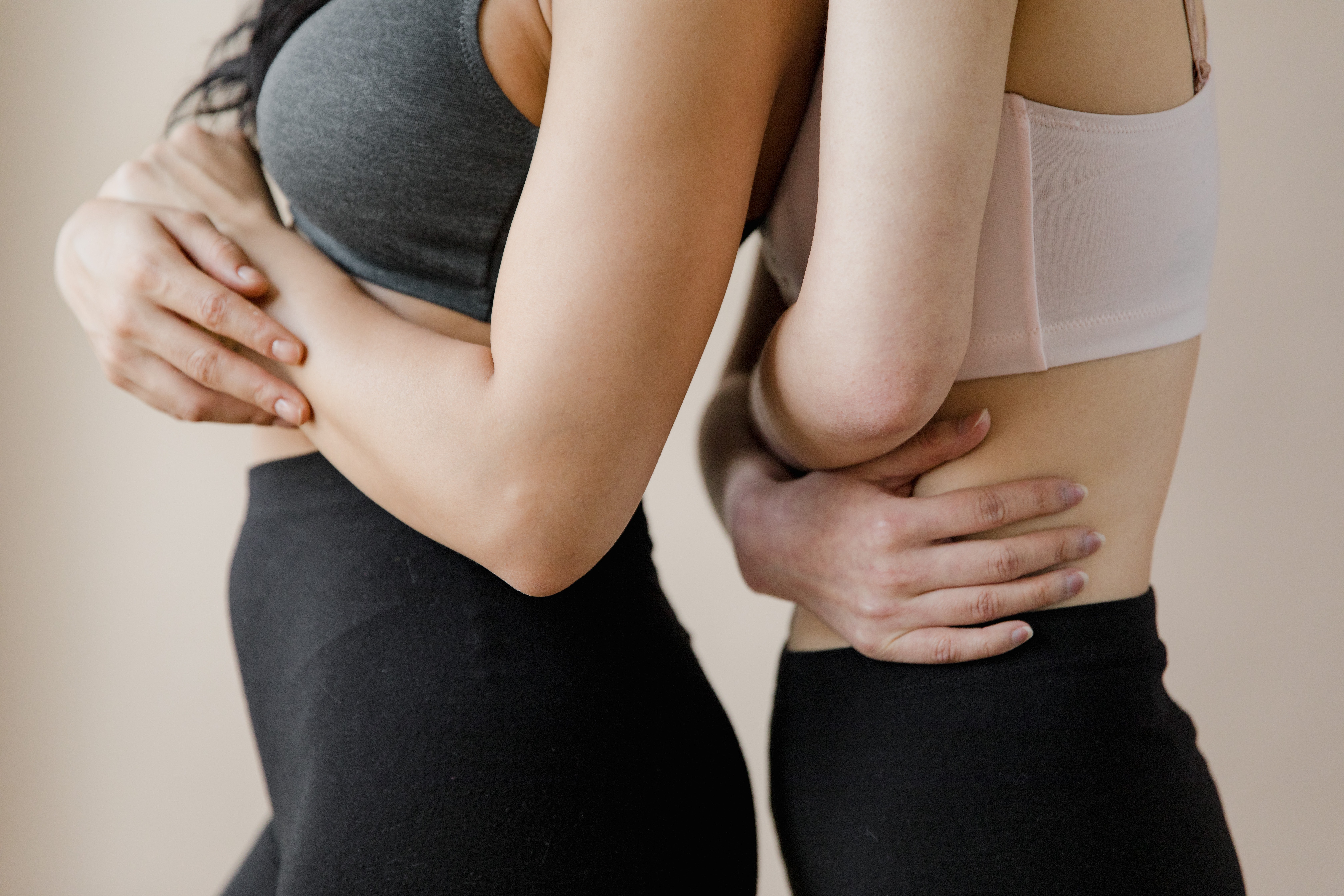
- Vitamin supplements like calcium, magnesium, vitamin E, and vitamin B-6
- Herbal remedies such as ginkgo, ginger, chasteberry, evening primrose oil, and St. John’s wort
- Acupuncture treatments
It’s important to consult with your doctor before trying any alternative therapies, as they may interact with medications you’re currently taking or have other side effects.
Tracking Your Symptoms
Keeping a detailed symptom diary can be incredibly helpful in managing your PMS. By recording when your symptoms start and stop, as well as their severity, you can identify patterns and triggers that allow you to implement strategies to mitigate their impact.
Seeking Support
Dealing with the physical and emotional effects of PMS can be challenging. Don’t hesitate to reach out to your healthcare provider, support groups, or mental health professionals for guidance and support. With the right combination of lifestyle changes, medical treatment, and self-care, many women are able to successfully manage their PMS symptoms.

Key Takeaways
- Premenstrual syndrome (PMS) is a collection of physical, emotional, and behavioral symptoms that occur in the days leading up to a woman’s menstrual period.
- There is no single test to diagnose PMS, but your doctor will rely on your symptom history and a process of elimination to rule out other potential causes.
- Lifestyle changes like diet, exercise, and stress management can help alleviate PMS symptoms for many women.
- Medications such as antidepressants, anti-inflammatory drugs, and diuretics may also be prescribed to manage more severe PMS symptoms.
- Alternative therapies like supplements, herbs, and acupuncture may provide relief for some women, though the scientific evidence is limited.
- Keeping a detailed symptom diary can help you identify patterns and triggers, allowing you to implement targeted strategies to manage your PMS.
- Seeking support from your healthcare provider, support groups, or mental health professionals can be invaluable in coping with the challenges of PMS.
Premenstrual syndrome (PMS) – Diagnosis and treatment
Diagnosis
There are no unique physical findings or lab tests to positively diagnose premenstrual syndrome. Your doctor may attribute a particular symptom to PMS if it’s part of your predictable premenstrual pattern.
To help establish a premenstrual pattern, your doctor may have you record your signs and symptoms on a calendar or in a diary for at least two menstrual cycles. Note the day that you first notice PMS symptoms, as well as the day they disappear. Also be sure to mark the days your period starts and ends.
Certain conditions may mimic PMS, including chronic fatigue syndrome, thyroid disorders and mood disorders, such as depression and anxiety. Your health care provider may order tests, such as a thyroid function test or mood screening tests to help provide a clear diagnosis.
Treatment
For many women, lifestyle changes can help relieve PMS symptoms. But depending on the severity of your symptoms, your doctor may prescribe one or more medications for premenstrual syndrome.
The success of medications in relieving symptoms varies among women. Commonly prescribed medications for premenstrual syndrome include:
- Antidepressants. Selective serotonin reuptake inhibitors (SSRIs) — which include fluoxetine (Prozac, Sarafem), paroxetine (Paxil, Pexeva), sertraline (Zoloft) and others — have been successful in reducing mood symptoms. SSRIs are the first line treatment for severe PMS or PMDD. These medications are generally taken daily. But for some women with PMS, use of antidepressants may be limited to the two weeks before menstruation begins.

- Nonsteroidal anti-inflammatory drugs (NSAIDs). Taken before or at the onset of your period, NSAIDs such as ibuprofen (Advil, Motrin IB, others) or naproxen sodium (Aleve) can ease cramping and breast discomfort.
- Diuretics. When exercise and limiting salt intake aren’t enough to reduce the weight gain, swelling and bloating of PMS, taking water pills (diuretics) can help your body shed excess fluid through your kidneys. Spironolactone (Aldactone) is a diuretic that can help ease some of the symptoms of PMS.
- Hormonal contraceptives. These prescription medications stop ovulation, which may bring relief from PMS symptoms.
Lifestyle and home remedies
You can sometimes manage or reduce the symptoms of premenstrual syndrome by making changes in the way you eat, exercise and approach daily life. Try these tips:
Try these tips:
Modify your diet
- Eat smaller, more-frequent meals to reduce bloating and the sensation of fullness.
- Limit salt and salty foods to reduce bloating and fluid retention.
- Choose foods high in complex carbohydrates, such as fruits, vegetables and whole grains.
- Choose foods rich in calcium. If you can’t tolerate dairy products or aren’t getting adequate calcium in your diet, a daily calcium supplement may help.
- Avoid caffeine and alcohol.
Incorporate exercise into your regular routine
Engage in at least 30 minutes of brisk walking, cycling, swimming or other aerobic activity most days of the week. Regular daily exercise can help improve your overall health and alleviate certain symptoms, such as fatigue and a depressed mood.
Reduce stress
- Get plenty of sleep.
- Practice progressive muscle relaxation or deep-breathing exercises to help reduce headaches, anxiety or trouble sleeping (insomnia).

- Try yoga or massage to relax and relieve stress.
Record your symptoms for a few months
Keep a record to identify the triggers and timing of your symptoms. This will allow you to intervene with strategies that may help to lessen them.
Alternative medicine
Here’s what’s known about the effectiveness of complementary remedies used to soothe the symptoms of premenstrual syndrome:
- Vitamin supplements. Calcium, magnesium, vitamin E and vitamin B-6 have all been reported to soothe symptoms, but evidence is limited or lacking.
Herbal remedies. Some women report relief of PMS symptoms with the use of herbs, such as ginkgo, ginger, chasteberry (Vitex agnus), evening primrose oil and St. John’s wort. However, few scientific studies have found that any herbs are effective for relief of PMS symptoms.

Herbal remedies also aren’t regulated by the Food and Drug Administration, so there’s no record of product safety or effectiveness. Talk with your doctor before taking any herbal products, as they may have side effects or interact with other medications you’re taking. St. John’s wort, for example, reduces the effectiveness of birth control pills.
- Acupuncture. A practitioner of acupuncture inserts sterilized stainless steel needles into the skin at specific points on the body. Some women experience symptom relief after acupuncture treatment.
Preparing for your appointment
You’re likely to start by seeing your family doctor or primary care provider. However, in some cases when you call to set up an appointment, you may be referred to a doctor who specializes in conditions affecting the female reproductive tract (gynecologist).
Here’s some information to help you prepare for your appointment and what to expect from your doctor.
What you can do
- Be aware of any pre-appointment restrictions. At the time you make the appointment, ask if there’s anything you need to do in advance to prepare.
- Write down symptoms you’re experiencing, including any that may seem unrelated to the reason for which you scheduled the appointment.
- Make a list of your key medical information, including any other conditions for which you’re being treated and the names of any medications, vitamins or supplements you’re taking.
- Consider questions to ask your doctor and write them down. Bring along notepaper and a pen to jot down information as your doctor addresses your questions.
For premenstrual syndrome, some basic questions to ask your doctor include:
- Is there anything I can do to minimize PMS symptoms?
- Will my PMS symptoms eventually go away on their own?
- Could the symptoms that I’m experiencing indicate a more serious medical condition?
- Do you recommend treatment for PMS symptoms? What treatments are available?
- Is there a generic alternative to the medicine you’re prescribing?
- Do you have any brochures or other printed material that I can take with me? What websites do you recommend?
Don’t hesitate to ask any other questions that occur to you during your appointment.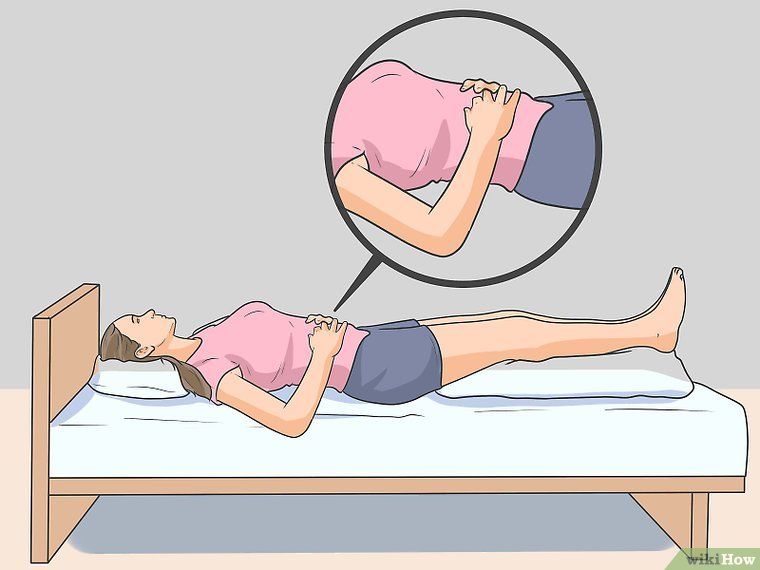
What to expect from your doctor
Your doctor is likely to ask you a number of questions, such as:
- How severe are your symptoms?
- On what days during your menstrual cycle are your symptoms at their worst?
- Do you have symptom-free days during your menstrual cycle?
- Can you anticipate when your symptoms are coming on?
- Does anything seem to make your symptoms better or worse?
- Do your symptoms interfere with your daily activities?
- Have you recently felt down, depressed or hopeless?
- Have you or has anyone in your family been diagnosed with a psychiatric disorder?
- What treatments have you tried so far? How have they worked?
Feb. 07, 2020
PMS: Diet Dos and Don’ts
Premenstrual syndrome (PMS) is such a regular occurrence for many women that they consider it a normal part of getting their period. About 8% to 20% of women get moderate to severe symptoms a week or two before their monthly cycle begins.
About 8% to 20% of women get moderate to severe symptoms a week or two before their monthly cycle begins.
These symptoms include a range of physical and emotional changes. The biggest complaint is often mood-related, such as feeling extremely grouchy or unhappy, often to the point where family members know when your period is coming, says gynecologist Rebecca Kolp, MD, medical director of Mass General West in Waltham, Mass. Abdominal bloating, breast tenderness, and headache are other frequent gripes she hears from patients.
Although the causes of PMS aren’t well understood, fluctuating levels of hormones and brain chemicals are thought to play a role. What a woman eats and drinks can also have an effect.
“There’s evidence that diet is involved in either the development of PMS or contributes to the severity of symptoms,” says Elizabeth Bertone-Johnson, ScD, an associate professor of epidemiology at the University of Massachusetts in Amherst, who has studied nutrition’s role in PMS.
With that in mind, here are eight diet-related suggestions to help ease PMS symptoms.
1. Do enjoy high-quality calcium foods.
In studies of college-aged women and nurses, women with the highest intakes of calcium and vitamin D were less likely to develop PMS, Bertone-Johnson tells WebMD.
“With calcium, those results were stronger when it came from foods than from foods plus supplements or a supplement alone,” she says. Her research found a food benefit from calcium at about 1,200 milligrams a day (RDA for women 19-50 is 1000 mg) and at 700 IU of vitamin D (RDA for women is 600 IU aged 70 and below.)
To get these amounts, aim for at least three servings of calcium-rich foods a day, such as low-fat milk, cheese, yogurt, fortified orange juice, or soy milk. It’s difficult to get enough vitamin D from diet alone (salmon and fortified milk are good sources), but women can make up the difference with a daily multivitamin or a supplement. Many calcium supplements also contain vitamin D.
As for why these nutrients may ease PMS, Bertone-Johnson suspects that calcium works in the brain to relieve depressive symptoms or anxiety, and vitamin D may also influence emotional changes.
Of course, you need adequate calcium and vitamin D for many other health reasons, including the health of your bones. Curbing PMS may be a fringe benefit.
2. Don’t skip breakfast or other meals.
“The hormone storm from PMS can lead to a domino effect on appetite,” says Elizabeth Somer, an Oregon-based dietitian and author of Eat Your Way to Happiness.
To avoid becoming overly hungry, eat regular meals and snacks throughout the day. If you’re feeling blue from PMS, then skipping a meal will only make you more irritable as blood sugar levels plummet.
3. Do include whole grains, lean protein, fruits, and vegetables.
Eating well all month long is a better approach to PMS than tweaking your diet when you have symptoms. So enjoy plenty of colorful, fiber-packed fruits and vegetables, as well as whole grains, such as brown rice, oatmeal, and rye bread.
Fortified breads and cereals also supply B-vitamins. Recent research found that women with higher intakes of thiamine (vitamin B-1) and riboflavin (vitamin B-2) had a significantly lower risk of PMS. This was true for women who got B-vitamins from food, but not from supplements.
4. Don’t overload on sugar.
“If you’re craving sugar, you’re craving it for a reason,” Somer says. That reason is shifting levels of the hormones estrogen and progesterone, which can also decrease levels of the chemical serotonin in the brain. These changes may affect a woman’s mood and trigger PMS symptoms.
In fact, studies have shown that some women with PMS may take in 200 to 500 more calories a day. Those additional calories typically come from fats, carbohydrates, or sweet foods.
Rather than turning to sugar to boost serotonin levels, Somer advises eating whole grains instead.
5. Do pay attention to what you’re drinking.
Some, but not all, studies have revealed that alcohol use is more common in women who are experiencing PMS or Premenstrual Dysphoric Disorder (PMDD), perhaps as an attempt to self-treat symptoms.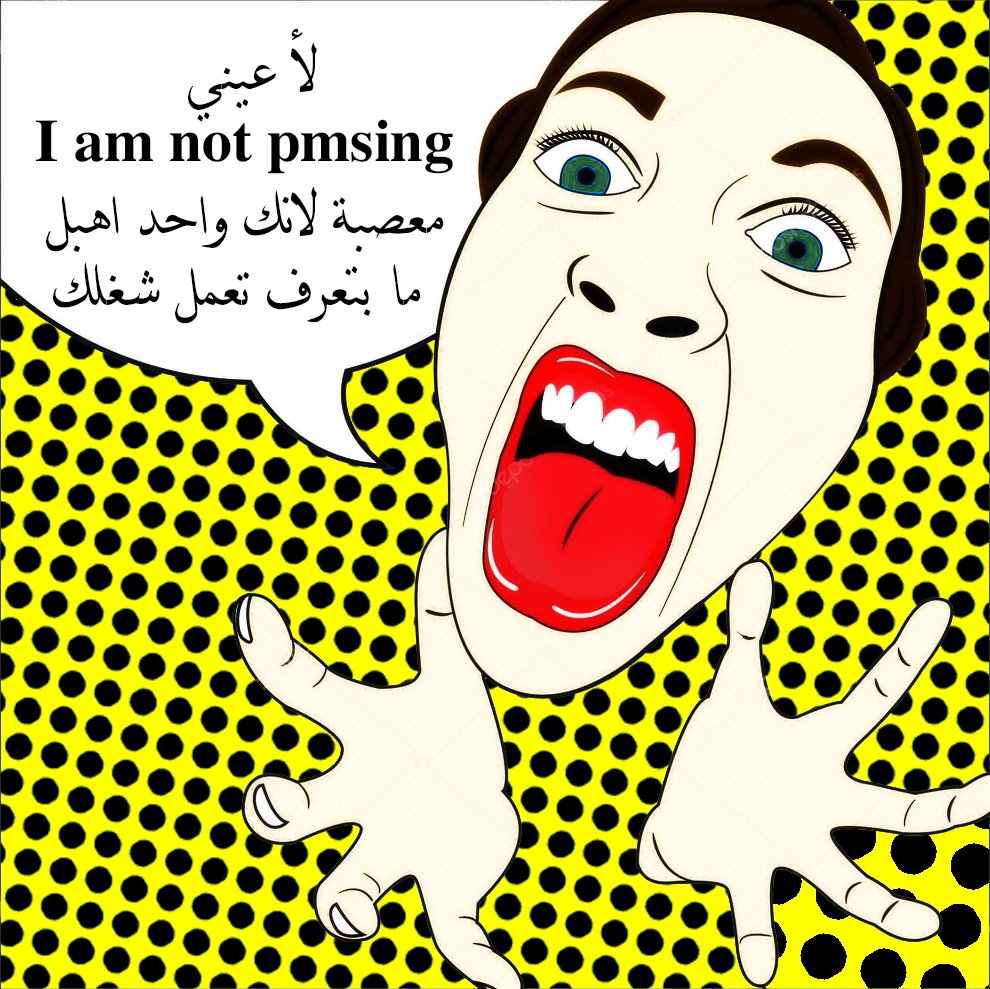 PMDD is a more severe form of PMS, in which emotional symptoms are more predominant. It affects fewer women than PMS.
PMDD is a more severe form of PMS, in which emotional symptoms are more predominant. It affects fewer women than PMS.
Although women are often advised to cut back on alcohol and even caffeine, there’s not a lot of evidence these steps are necessarily beneficial, Bertone-Johnson says. Her own research did not find that alcohol increased PMS risk. Still, she says, there’s no downside to easing up on alcohol and caffeine, and doing so may ease breast tenderness and bloating.
Somer likes to remind women to drink plenty of water to reduce bloating. This may sound counterintuitive, but she says a bloated body is holding on to too much water, likely because of too much salt.
6. Don’t overlook salt.
Since nearly everything that comes in a bottle, bag, package, or can is loaded with salt, it’s almost impossible to eliminate sodium. But slashing some of it may reduce the uncomfortable bloating and water retention from PMS, Somer says.
To halt the salt, focus on whole foods, rather than overly processed or convenience foods, because sodium is often added during manufacturing. “And if you can’t cut back enough, drink lots of water,” Somer says, so your body can get rid of the excess sodium.
“And if you can’t cut back enough, drink lots of water,” Somer says, so your body can get rid of the excess sodium.
7. Do consider supplements.
Besides encouraging her patients to eat a healthy diet, Kolp also recommends that they first treat PMS symptoms with a combination of exercise, stress reduction, and some supplements.
She suggests a daily multivitamin, 100 milligrams of vitamin B-6 a day, 600 milligrams of calcium carbonate with vitamin D daily, along with at least one calcium-rich food serving, as well as 400 milligrams of magnesium oxide.
Taking B-6 and magnesium at these levels may temper mood changes, and magnesium may reduce water retention.
As always, tell your doctor about any supplements you’re taking to avoid any possible drug interactions, and let her know if PMS is causing you a lot of problems.
8. Don’t ignore other lifestyle habits.
There’s some evidence that maintaining a healthy body weight may help prevent PMS, and that overweight or obese women are more likely to have symptoms. Being physically active helps keep your waistline in check and works wonders to release stress.
Being physically active helps keep your waistline in check and works wonders to release stress.
“Stress plays a huge role in the intensity of PMS symptoms,” Kolp tells WebMD. So find ways to relax your mind, whether it’s exercising, deep breathing, or doing yoga.
Feeling tired is yet another sign of PMS, so you might need more sleep than usual. Lastly, ditch the butts: A recent study showed that smoking, especially in your teens or early 20s, may increase a woman’s risk for moderate to severe PMS.
What Should I Do If My PMS Is Getting Worse?
Like clockwork, many women experience premenstrual symptoms including body tenderness and bloating. These symptoms typically arise a few days before you get your period each month and fade as it goes by.
When symptoms are severe enough to disrupt your daily activities, it’s called PMS: premenstrual syndrome. PMS is an array of symptoms that includes mood changes, cramps, body aches, pain, and fatigue. About 90 percent of girls and women have PMS during their lifetimes and 20 to 40 percent experience severe PMS symptoms.
As women age, they tend to accept and cope with PMS challenges. But some women actually find their PMS worsens as the years go by. If this sounds like you, read on.
The Hormone Connection
If you’re approaching menopause, fluctuating hormone levels may be responsible for worsening PMS symptoms. Research shows that women who suffer from PMS earlier in life tend to have a rockier transition to menopause later in life.
These hormonal changes can cause PMS to flare up more noticeably every month. Your mood may feel darker and more irritable. You might have “brain fog” or experience reduced alertness. You may have more body aches, breast tenderness, and persistent headaches.
The Bigger Picture
Not close to menopause? Then it’s particularly important to talk to your doctor about worsening PMS symptoms. Other issues could be at play.
Thyroid disease, for example, can mimic some of the symptoms of PMS. Polycystic ovary syndrome (PCOS) is often associated with chronic PMS, but is really another set of health issues.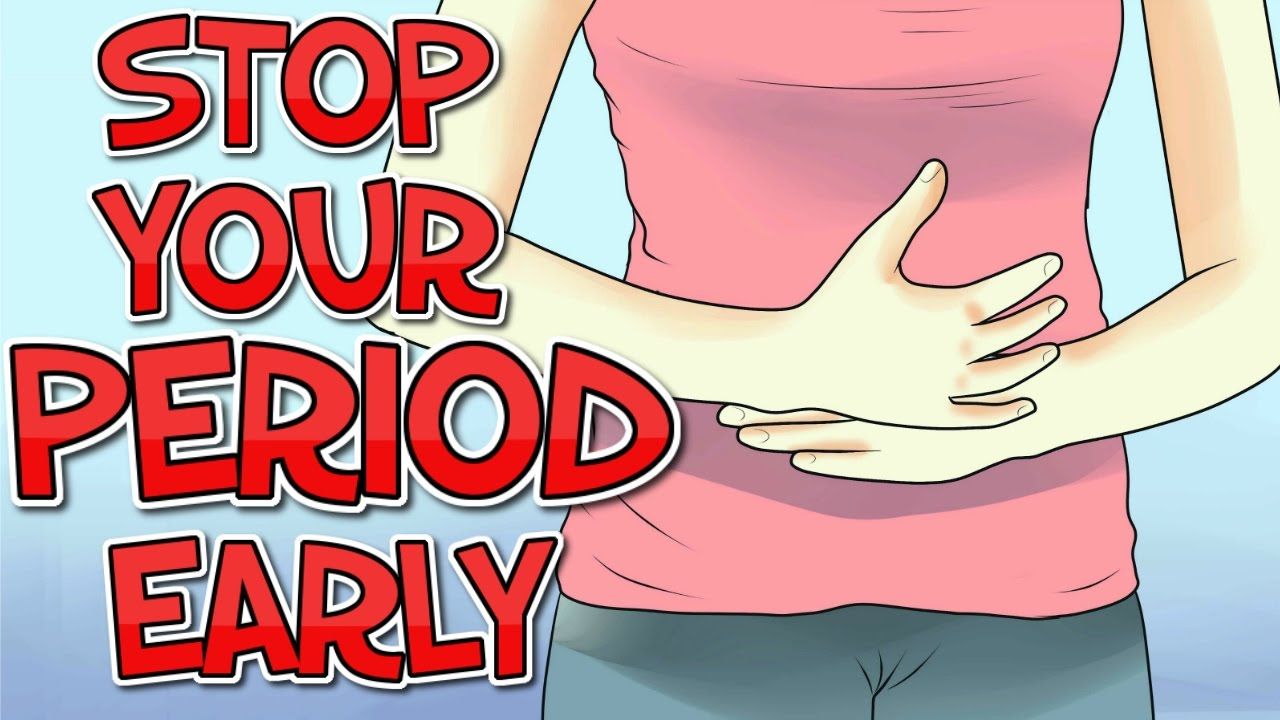 A doctor can sort through your exact symptoms and get to the root cause.
A doctor can sort through your exact symptoms and get to the root cause.
PMS can also make existing health issues worse. If you have the following conditions, you will likely experience more symptoms when you’re experiencing PMS:
Depression or anxiety. These mental health issues can become worse during PMS and your period.
Irritable bowel syndrome (IBS). The cramping and bloating that come with IBS can worsen with PMS.
Bladder pain. If you already experience bladder pain, PMS may add to the pain.
Myalgic encephalomyelitis/chronic fatigue syndrome (ME/CFS). Some research shows that women with ME/CFS tend to have heavy menstrual bleeding and more severe PMS.
PMS vs. PMDD
In the last few decades, another period-related health issue has come into focus: PMDD, or premenstrual dysphoric disorder. This is a severe form of PMS that occurs in about 3 to 8 percent of women who have PMS.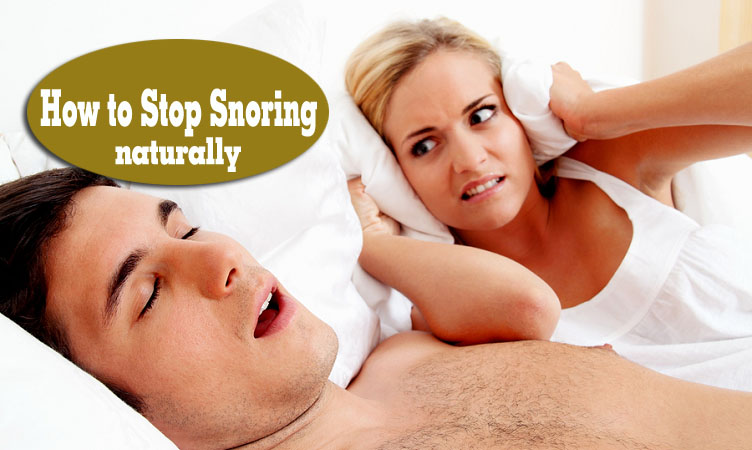
PMDD has the following characteristics:
- Predictable, cyclical monthly pattern
- Severe disruption of daily activities
- Extreme moodiness that may include hopelessness or anger
- Mental health concerns like depression or anxiety
If you suspect you may have PMDD, speak to a doctor as soon as possible. PMDD can have long-term effects on your mental health. Your doctor may recommend treatments like:
- Antidepressants, which help with emotions, fatigue, food cravings, and sleeplessness.
- Birth control pills, which reduce PMS and PMDD symptoms in some women.
- Vitamins and supplements, which ease nutritional imbalances.
- Diet and lifestyle changes, which can support overall wellness.
Coping With Worsening Symptoms
PMS symptoms can be stubborn and frustrating. But research shows that you can take certain steps to ease its impact on your body, mind and lifestyle. Here are some tips.
Here are some tips.
Focus on food. Eating a healthy diet rich in nutrients is important every day, but it’s particularly important before and during your period. Include whole grains, protein, low-fat dairy, and a variety of fruits and vegetables. Eat foods rich in calcium for bone health.
Avoid triggers. You might be craving chocolate or coffee, but these can trigger PMS symptoms in many women. Try to avoid caffeine, alcohol, chocolate and salt.
Reduce inflammation. Aspirin and ibuprofen are anti-inflammatories and can reduce the swelling that often accompanies PMS.
Try low-impact exercise. Your period might not make you feel like exercising, but mild exercise can ease PMS symptoms. Explore low-impact exercises like walking, swimming and cycling.
Concerned about PMS or PMDD? Reach out to the experts at Johnson Memorial Women’s Health Specialists.
Cures for Moodiness and Other Symptoms
If you’re like most women on earth, you have a hate-hate relationship with PMS. Seriously, what’s to like about premenstrual syndrome, with its ugly calling cards—mood swings, bloating, uncontrollable food cravings, and irrational crying jags?
Seriously, what’s to like about premenstrual syndrome, with its ugly calling cards—mood swings, bloating, uncontrollable food cravings, and irrational crying jags?
All told, the condition describes a collection of more than 150 symptoms that can strike the week before your period, due to an imbalance of estrogen and progesterone levels. Compounding the hormonal plunge are factors such as stress, insufficient sleep, and unhealthy eating, says hormone researcher Lorraine Pintus, author of Jump Off the Hormone Swing.
But don’t automatically raid the medicine cabinet—no matter what your symptoms, you may be able to find a fix with these alternative therapies.
Natural PMS Cures Include:
Supplements
Introducing your new premenstrual superstars : vitamin E and essential fatty acids, per a study in Reproductive Health. Women who swallowed the two every day for six months saw major PMS improvements, possibly because both nutrients interact with prostaglandin receptors (prostaglandins are the hormones believed to cause fierce cramps). A daily multivitamin should supply you with the 15 milligrams of E you need, and you can pop a daily fish-oil capsule to get your fatty acids. (Also, a calcium-rich diet—one full of leafy greens, almonds, and yogurt—may help prevent many PMS symptoms. Aim for about 1,300 milligrams of calcium a day.)
A daily multivitamin should supply you with the 15 milligrams of E you need, and you can pop a daily fish-oil capsule to get your fatty acids. (Also, a calcium-rich diet—one full of leafy greens, almonds, and yogurt—may help prevent many PMS symptoms. Aim for about 1,300 milligrams of calcium a day.)
Best For: mood swings, sore breasts, cramps, headaches, acne
Acupuncture
Finally, a kind of prick you can love. Research shows acupuncture is ace at treating PMS. One study found that acupuncture quelled symptoms in 78 percent of women. Though Western doctors still don’t quite understand how it works, they believe acupuncture may increase circulation and elevate endorphins, which enhance mood and alleviate pain. Most women experience PMS relief within 24 hours after a session, so depending on your reaction, you might get treated once a month in the week before your period.
Best For: cramps, anxiety, insomnia, headaches, nausea
Progesterone Cream
Because researchers believe most premenstrual troubles stem from out-of-balance estrogen and progesterone levels, many treatments aim to restore that equilibrium (one reason the Pill is often prescribed for PMS). Using a natural progesterone cream can have a similar effect, says WH advisor Frank Lipman, M.D., founder of the Eleven Eleven Wellness Center in New York City. A few forms—including one made from wild yams (yes, really!)—are available OTC and can be applied daily to your inner thighs or lower abdomen before your period.
Using a natural progesterone cream can have a similar effect, says WH advisor Frank Lipman, M.D., founder of the Eleven Eleven Wellness Center in New York City. A few forms—including one made from wild yams (yes, really!)—are available OTC and can be applied daily to your inner thighs or lower abdomen before your period.
Best For: mood swings, cramps, anxiety, insomnia
Herbs
While some controversy remains over whether herbs can really cure health issues, science suggests the stuff might lighten your PMS load. The awesomely named chaste berry may stimulate your endocrine system to produce Beat PMS’s heinous hallmarks! more natural progesterone, which may cut your bloating, irritability, and achy-boob symptoms in half, says Katrina Schmell, a nurse practitioner at the University of Colorado Hospital. And evening primrose may help alleviate anxiety and cramps, while valerian root, an ingredient in many teas, may work as a muscle relaxer. (Schmell says to check with your primary-care provider before beginning any regimen. )
)
Best For: mood swings, sore breasts, cramps, bloating
Sweating and Stretching
Stop laughing. Mild forms of exercise can alleviate several gnarly PMS symptoms, says Gabrielle Francis, a naturopathic doctor, chiropractor, and acupuncturist in New York City. Working out not only releases pain-busting endorphins but also triggers dopamine (your natural source of pleasure and satisfaction) and serotonin (a depression and anxiety fighter). And doing hip and back stretches can increase blood flow to contracted uterine, abdominal, and lower-back muscles, easing the tension that leads to cramps. Francis recommends practicing daily yoga with moves such as child’s pose or happy baby during the week before your period to avoid PMS.
Best For: mood swings, cramps, anxiety, headaches
Natural Diuretics
Fluid retention, a particularly unsightly PMS signature symptom (“Um, these pants fit last week!”), builds up as a result of fluctuating hormones and can make you feel like an overstuffed sausage. Eastern doctors have believed for centuries that nutrients such as potassium, calcium, magnesium, and vitamins B and C act as natural diuretics, relieving big-time bloat. Western docs have recently caught on, advising patients to snack on bananas, fennel, tomatoes, celery, watercress, and citrus fruits pre-period, says Schmell. And think twice before you depend on your morning latte or a diet cola to get things, um, moving. Research shows that while caffeine might be able to slash fluid retention to potentially bring down bloating, it can also heighten your anxiety.
Eastern doctors have believed for centuries that nutrients such as potassium, calcium, magnesium, and vitamins B and C act as natural diuretics, relieving big-time bloat. Western docs have recently caught on, advising patients to snack on bananas, fennel, tomatoes, celery, watercress, and citrus fruits pre-period, says Schmell. And think twice before you depend on your morning latte or a diet cola to get things, um, moving. Research shows that while caffeine might be able to slash fluid retention to potentially bring down bloating, it can also heighten your anxiety.
Best For: bloating
DIY Massage
It may not be as indulgent as the real deal, but self-massage can lessen your pre-period woes, as any kind of rubdown increases blood flow and eases muscle and mental tension. Some of the essential oils used in massage also make a difference, including lavender (a muscle relaxer) and geranium (an estrogen balancer). Francis advises using several drops of one type of oil in a handful of massage lotion and starting on your right side above your groin and massaging up to your waist in a clockwise motion.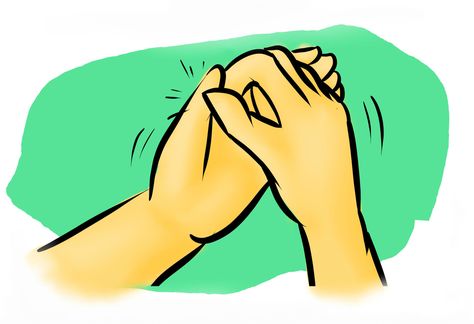 Once there, move to your left side and work down to your groin again. Do the massage for five minutes twice a day during peak PMS time, using moderate to deep pressure.
Once there, move to your left side and work down to your groin again. Do the massage for five minutes twice a day during peak PMS time, using moderate to deep pressure.
Best For: cramps, headaches, bloating
Magnetic Therapy
Sounds wild, right? But doctors have used pulsed electromagnetic field therapy (PEMF) to relieve depression and chronic pain, and now it appears magnets can do wonders for PMS, according to a study published in The Journal of Alternative and Complementary Medicine. Women who wore small magnetic devices attached to the sides of their underwear two days before and then during their periods saw their symptoms improve significantly. In fact, a subsequent survey found that when some women used the magnets for a year or more, they continued to experience pain relief. Try MN8 ($45, ladycareusa.com) or Allay ($13, allaystore.com).
Best For: sore breasts, cramps, bloating, acne
Does “Man PMS” Exist?
Sure seems like it sometimes—but technically, only women suffer from PMS. However, men may have their own cyclical condition, one that’s been dubbed irritable male syndrome (no joke). The idea is that a man’s day involves a 24-hour testosterone swing, with the hormone dropping at night and spiking in the morning, says Gabrielle Francis, N.D. This explains why men (and especially, ahem, parts of them) wake up energized and ready to go, then lose steam throughout the day. In short, your guy is on a daily roller coaster, while you’re on a monthly one.
However, men may have their own cyclical condition, one that’s been dubbed irritable male syndrome (no joke). The idea is that a man’s day involves a 24-hour testosterone swing, with the hormone dropping at night and spiking in the morning, says Gabrielle Francis, N.D. This explains why men (and especially, ahem, parts of them) wake up energized and ready to go, then lose steam throughout the day. In short, your guy is on a daily roller coaster, while you’re on a monthly one.
This content is created and maintained by a third party, and imported onto this page to help users provide their email addresses. You may be able to find more information about this and similar content at piano.io
How to stop PMS hormones from turning you into an irritable, paranoid, depressed mess
This image was removed due to legal reasons.
A few weeks ago a friend G-chatted me in desperation. Normally easygoing, she sounded panicked. Unlike most women she knew, she suffered from only mild menstrual cramps. She barely even felt bloated. But every month, she said, she could feel a tsunami of hormones brewing inside her in the days leading up to her period.
Unlike most women she knew, she suffered from only mild menstrual cramps. She barely even felt bloated. But every month, she said, she could feel a tsunami of hormones brewing inside her in the days leading up to her period.
Like Marvel’s Hulk transforming into an erratic monster, she, too, transformed—not into a caricature of a PMS bitch, but into an uber-sensitive, paranoid, depressive version of herself. These hormonal sneak attacks were wreaking havoc on her relationships, and yet she felt embarrassed to even acknowledge them, for fear of being seen as a walking stereotype. She wondered: Was there an antidote?
Surprisingly, premenstrual mood swings are something of a medical mystery. We know they’re caused by a combination of hormonal fluctuations, personal biology, and environment, but this delicate balance of factors can make treating them a process of trial and error for every woman. “This has been a topic of conversation for as long as people have been talking,” says Ira Jaffe, an OBGYN at NYU’s Langone Medical Center. “If there was one approach that worked, we’d all be doing it. But no one has an exclusive hold on the best approach so far.”
“If there was one approach that worked, we’d all be doing it. But no one has an exclusive hold on the best approach so far.”
As I later reported back to my friend, there are proactive steps women can take to mitigate the effects of premenstrual mood swings, including diet and lifestyle changes. The first step, however, is acknowledging that these mood swings are real—and should not be a source of shame.
Over the past few decades, as more women have entered the workplace, discussing the psychological toll of menstruation has become something of a taboo. We still live in a world where women are discriminated against simply for having periods—who can forget Donald Trump telling Fox News’ Megyn Kelly that she had “blood coming out of her wherever”? So admitting that our periods can influence our state of mind can feel risky. But until we discuss this reality openly, we’ll never see progress. So let’s discuss, shall we?
G/O Media may get a commission
What causes PMS mood swings?
Most women understand what a “period” is, but not everyone understands the complex hormonal and chemical changes that occur in the body before and after menstruation. The key to managing premenstrual mood swings, however, is understanding these changes.
The key to managing premenstrual mood swings, however, is understanding these changes.
So what do we know about our periods? We know that PMS happens once a month during the luteal phase of the menstrual cycle, which is the 14-day window before a woman gets her period. While not all women suffer from PMS, about 80% to 90% experience some form of physical or emotional changes before their period, and about 15% of those women experience multiple or severe symptoms—to the point at which PMS seriously impacts their life.
“We see a variety of things in PMS,” says NYU’s Jaffe. “Increased irritability, short temper, difficulty focusing, easily moved to tears—things we could say are similar to clinical depression.”
One reason for these changes may boil down to hormones—specifically, having too much or too little estrogen or progesterone in your body at a given time. At the very beginning of a woman’s cycle, right after menstruation, the body releases estrogen into the bloodstream, which causes the lining of the uterus to grow again.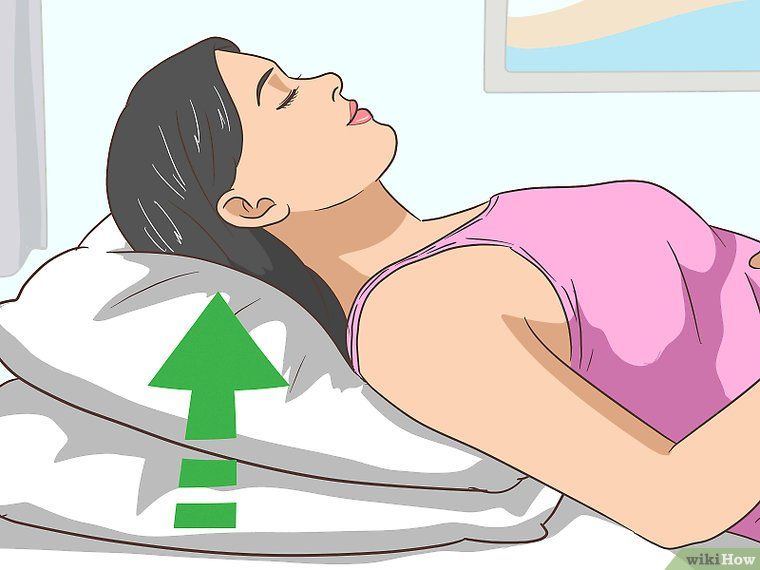 But then, about halfway through the month, estrogen tapers off and progesterone rises, which helps to stabilize that lining. This shift is key, since a spike in progesterone can lead to changes in mood that continue until menstruation begins. “Once we see menstrual flow and both hormones start to drop,” says Jaffe, “there is relief from the symptoms.”
But then, about halfway through the month, estrogen tapers off and progesterone rises, which helps to stabilize that lining. This shift is key, since a spike in progesterone can lead to changes in mood that continue until menstruation begins. “Once we see menstrual flow and both hormones start to drop,” says Jaffe, “there is relief from the symptoms.”
But hormones are only part of the puzzle. Women also experience fluctuations in the release of neurotransmitters, including serotonin, dopamine, and GABA (gamma-aminobutyric acid). Also known as the “anti-anxiety” neurotransmitter, GABA plays a role in both relieving anxiety and elevating mood. Shifts in all of these neurotransmitters can affect our emotional state, says Elizabeth Bertone-Johnson, a professor of epidemiology at University of Massachusetts-Amherst who has studied PMS extensively.
And yet, while we know that fluctuations in hormones and neurotransmitters can alter a woman’s mood, medicine offers no simple fix. This is because the multiple chemical interactions and chain reactions are different for every woman. If doctors could pinpoint one cause for a woman’s PMS mood swings—such as determining that her estrogen level was too high or low—they could treat them with medication, but that’s simply not the case, explains Bertone-Johnson. Women can’t just pop a pill to decrease estrogen levels or increase serotonin levels and feel like themselves again.
If doctors could pinpoint one cause for a woman’s PMS mood swings—such as determining that her estrogen level was too high or low—they could treat them with medication, but that’s simply not the case, explains Bertone-Johnson. Women can’t just pop a pill to decrease estrogen levels or increase serotonin levels and feel like themselves again.
“We spend so much time trying to figure this out,” says Bertone-Johnson, who has been working to develop a “cure” for PMS for years. “Science suggests it’s not just hormones and brain chemistry. It’s a huge combination of a lot of different factors and varies from woman to woman.” This is one reason why women on hormonal birth control experience period-related psychological changes, too.
Along with hormonal fluctuations, a myriad of other factors contribute to the severity of PMS symptoms. These can include stress (which triggers the release of cortisol into the body), a woman’s environment, whether or not she has a support system, diet, whether she smokes, how much sleep she gets, and how often she exercises, combined with her own personal psychology and brain chemistry. With so many variables, what, if anything, can help curb the changes?
With so many variables, what, if anything, can help curb the changes?
What foods help to combat PMS mood swings?
While we can’t expect a miracle cure anytime soon, we can make lifestyle changes to help ward off premenstrual mood swings. Perhaps more than anything, we can change how we eat.
You may know that balancing blood sugar is key to overall health. When our blood sugar veers too high or too low, we feel dizzy, irritable, anxious, tired, and generally crappy. In the long run, imbalanced blood sugar can lead to more serious conditions like diabetes and hypoglycemia.
Along with the other chemical changes, in the days leading up to our period our blood sugar levels can fluctuate, too. This is why diet can have a huge influence on the severity of premenstrual symptoms, says Robyn Srigley, a “PMS coach” and holistic nutritionist who helps women manage period-related pain and balance their moods through diet and lifestyle changes. “The first thing every woman has to do is balance her blood sugar and make sure to eat nutrient-dense food,” she explains.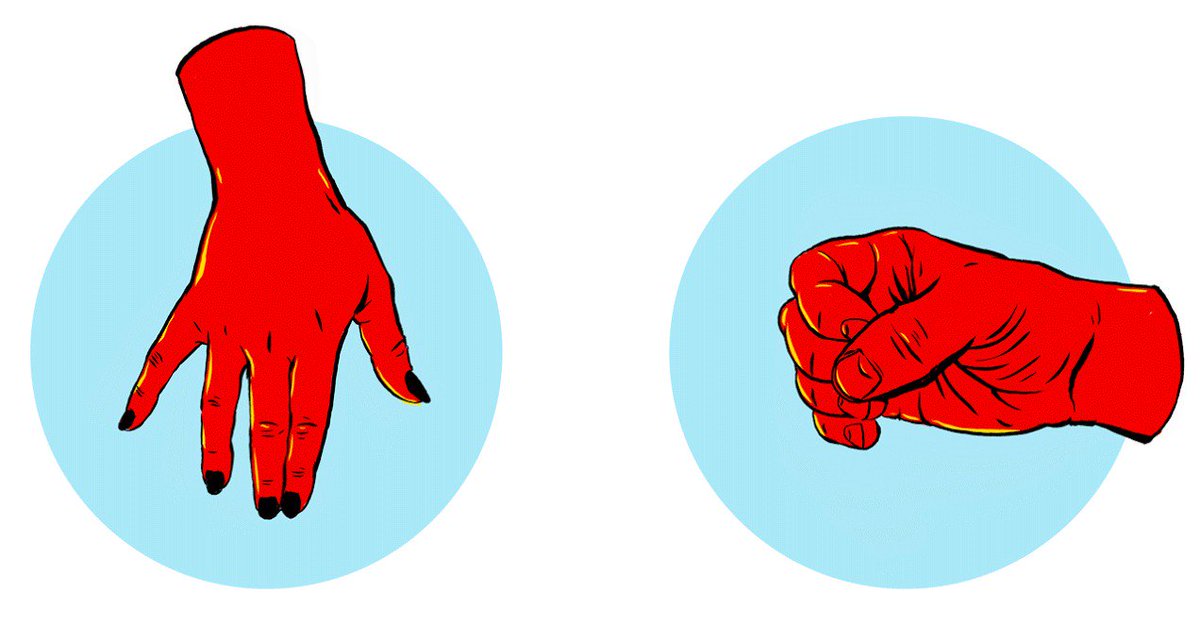 “Most meals should be comprised of lean protein, fat, and fiber.”
“Most meals should be comprised of lean protein, fat, and fiber.”
One trick for balancing blood sugar is adding a teaspoon of cinnamon to a smoothie. “Ovaries are very sensitive to insulin,” Srigley says. “By adding a teaspoon of ground cinnamon, you can increase your insulin sensitivity and utilize that blood sugar for energy.” Some research suggests that, during the luteal phase, progesterone may lower insulin sensitivity—which isn’t a good thing. Being more sensitive to insulin means you don’t have to pump out as much of it to keep blood glucose levels in the normal range. So by raising your insulin sensitivity, you can better balance your blood sugar. This can help prevent that hangry feeling of “I have to eat or I’ll rip someone’s face off.”
Insulin is not the only hormone affected by diet. Food can also play a role in balancing estrogen and progesterone levels. For example, in order to balance estrogen, Srigley tells her clients to eat cruciferous vegetables such as broccoli, brussels sprouts, and kale. “They’re full of fiber which helps to bind to excess estrogen and then you excrete it when you poop,” she says.
“They’re full of fiber which helps to bind to excess estrogen and then you excrete it when you poop,” she says.
Another tip for combating irritability, lethargy, and anxiety is increasing protein levels. The hormone progesterone can increase our appetites—and research suggests that eating more protein-rich foods counteracts this effect. This works because progesterone selectively metabolizes protein—meaning it both craves protein and quickly gobbles it up. In fact, when progesterone spikes our bodies can burn protein 10% more efficiently, which is why eating more of it keeps us feeling satiated.
Vitamins may also play a role in combatting mood swings. In her research, Bertone-Johnson found that women who consume more vitamin D and calcium through the foods they eat experience fewer symptoms. In fact, upping these vitamins decreases PMS risk by 30% to 40%, she says. Another key nutrient to preventing PMS, according to her research? Vitamin B. Higher levels of certain B vitamins, such as thiamine and riboflavin, were also associated with a lower risk of PMS.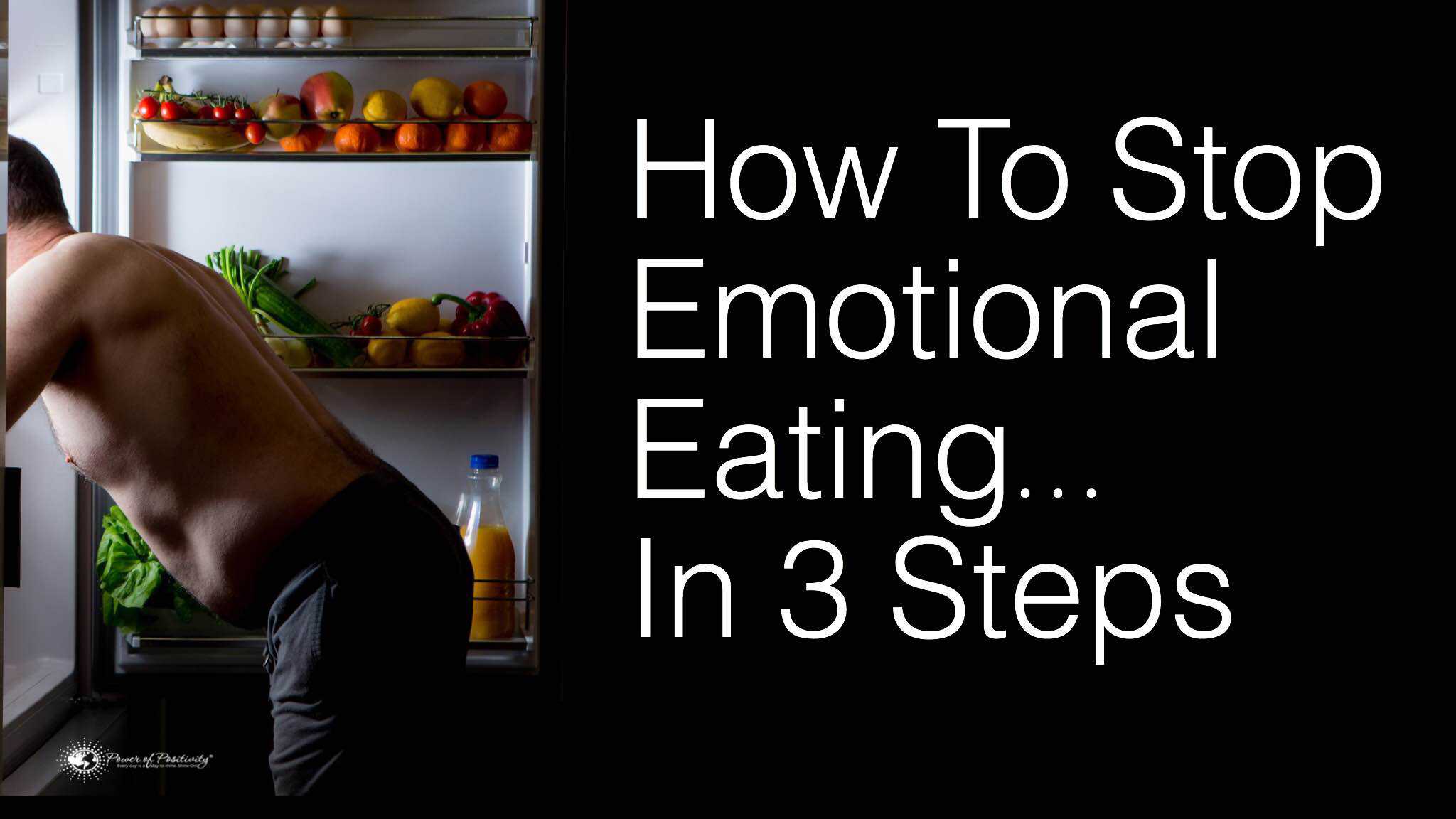 So start chowing down on foods such as salmon, red meat, spinach, bell peppers, broccoli, and lentils.
So start chowing down on foods such as salmon, red meat, spinach, bell peppers, broccoli, and lentils.
Eating sweets, however—a common PMS cliche—is the wrong way to feel better. “As much as you can, avoid sugar,” says Srigley. Refined sugars lead to a quick sugar high, which also means a quick sugar low. The exception? Dark chocolate with no dairy in small quantities.
What role does stress play?
We now know that the environment inside our body can contribute to premenstrual mood swings, but so can the environment outside of it. Namely: Stress. “Anything you can do to reduce stress at this time—reading, walking outdoors, yoga, whatever it may be—seems to help,” says Srigley, the PMS coach.
When we feel stressed our bodies release cortisol, and an overabundance of cortisol can increase inflammation, lower our immune function, overwork our adrenal system, and put us at greater risk for depression and mental illness. So it’s no surprise that too much cortisol may also exacerbate PMS systems.
In her research, Bertone-Johnson has found that women who were experiencing PMS displayed higher levels of internal inflammation—and we know that more stress leads to inflammation, and more inflammation can lead to PMS. “Stress throws a lot of things out of whack,” she says, “and we’ve seen that stress affects both reproductive function and hormones.”
One way to combat premenstrual mood swings is to surround yourself with a supportive social network. Studies have shown that women who have a support system to lean on experience fewer symptoms of PMS, in part because of the ways this support can reduce stress. And if you don’t have a good system in place, therapy can help, too.
The most important thing to remember however, says Jaffe, is that it’s okay to ask for help if premenstrual mood swings are getting in the way of your life and your happiness:
“Needing help is not a sign of weakness.”
Taryn Hillin is Fusion’s love and sex writer, with a large focus on the science of relationships. She also loves dogs, Bourbon barrel-aged beers and popcorn — not necessarily in that order.
She also loves dogs, Bourbon barrel-aged beers and popcorn — not necessarily in that order.
26 Ways To Get Relief From PMS
Think of it as biological warfare, its battles played out on the fields of a woman’s body and mind. Once a month, about 2 weeks before she begin to menstruate, the opposing armies—estrogen and progesterone—begin to amass. These female hormones, which regulate the menstrual cycle and affect a woman’s central nervous system, normally work in tandem. It’s only when one of them tries to outdo the other that trouble looms. Some women escape the conflict altogether, their hormones striking a peaceful balance before a single sword is drawn. Others are less fortunate. For one woman, estrogen levels may soar, leaving her feeling anxious and irritable. In another, progesterone predominates, dragging her into depression and fatigue.
The battles can rage for days. You may feel bloated and gain weight, or have a headache, backache, acne, allergies, or terrible breast tenderness.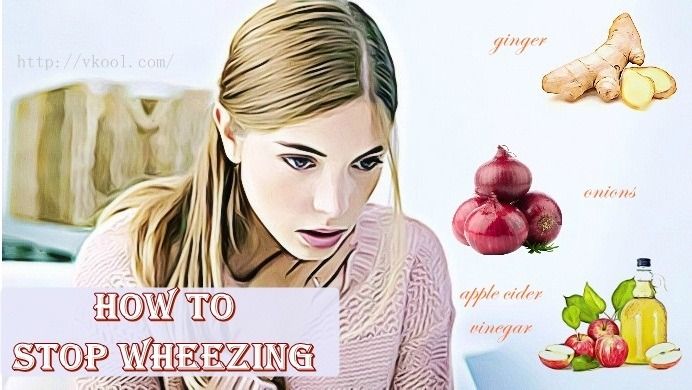 You may crave ice cream and potato chips. Your mood may shift without reason, swinging from euphoria to depression. Then, suddenly, the troops clear out and peace of mind returns—just as your period begins. Though it takes many shapes and sizes, the more than 150 symptoms that can occur during this period are categorized as premenstrual syndrome, or PMS. And though the exact cause is not known, the PMS symptoms are very real and affect most women in one way or another.
You may crave ice cream and potato chips. Your mood may shift without reason, swinging from euphoria to depression. Then, suddenly, the troops clear out and peace of mind returns—just as your period begins. Though it takes many shapes and sizes, the more than 150 symptoms that can occur during this period are categorized as premenstrual syndrome, or PMS. And though the exact cause is not known, the PMS symptoms are very real and affect most women in one way or another.
MORE: 4 Things Your Period Says About You
“About 85% of menstruating women have one or more premenstrual symptoms, but not all of these women have a diagnosis of PMS,” says Rallie McAllister, MD, MPH. “When the emotional and physical symptoms interfere with daily life, PMS is typically diagnosed, and PMS affects about 40% of American women at some point in their lives. PMS occurs most often in women in their twenties and thirties, but it may occur in teens and older women.” In about 3 to 8% of women, the symptoms are so severe that the condition is categorized as PMDD, or premenstrual dysphoric disorder. “It’s a severe form of PMS that is characterized by severe mood disturbances, usually irritability but also mood swings, depressed mood, and anxiety that causes functional impairment,” says Susan G. Kornstein, MD.
“It’s a severe form of PMS that is characterized by severe mood disturbances, usually irritability but also mood swings, depressed mood, and anxiety that causes functional impairment,” says Susan G. Kornstein, MD.
Regardless of the scope or severity of your symptoms, our experts came up with a number of tips that can help you get PMS relief.
Exercise
Many experts agree that exercise may be your best PMS prescription. “Not only does it help reduce the negative effects of any emotional stress, but it also boosts the levels of mood-elevating endorphins, helps regulate fluctuating blood sugar levels, controls appetite, and prevents weight gain,” says McAllister. The type of exercise you choose really isn’t that critical, adds McAllister. The key is to get yourself moving. “Women should engage in activities that they enjoy,” she says. “The main goal is to put your body in motion for at least 30 minutes a day, most days of the week.”
MORE: The Incredible Results That You Get From Walking 30 Minutes A Day
Rely On Relaxation
In addition to exercise, Steven Jepson, MD, says that several other relaxation techniques can help alleviate symptoms as well. “Deep breathing exercises, meditation, and yoga can also help reduce some of the mood symptoms associated with PMS, including mood swings, anxiety, and irritability,” he says. (Try these 3 yoga poses to relax.)
“Deep breathing exercises, meditation, and yoga can also help reduce some of the mood symptoms associated with PMS, including mood swings, anxiety, and irritability,” he says. (Try these 3 yoga poses to relax.)
Be Prepared
PMS symptoms may not be pleasant, but if you prepare yourself mentally for their arrival every month, you’ll have a lot easier time dealing with them, says Kornstein. “I have found that it helps patients if they are aware of where they are in their menstrual cycle and can anticipate the onset of PMS symptoms, rather than being caught off guard,” she says. “Then when the PMS symptoms occur, if they are able to label them as PMS, it may help them not to overreact to situations.”
Track Your Symptoms
Of course, step one is realizing and accepting the fact that you actually have PMS. And Kornstein says that the easiest way for a woman to do that is to “chart her symptoms daily over two menstrual cycles to confirm that she has PMS. If she can learn the exact pattern of her particular symptoms, she can try to plan around them. ”
”
Be Realistic
Having a positive attitude and getting enough exercise may help, but McAllister stresses that there’s no reason to despair if you still feel bad during this time. “A positive outlook is beneficial to health and healing, but alone, it’s rarely a cure,” she says. “In many cases, depressed mood and negative emotions are the result of PMS rather than the cause. Fluctuations in serotonin and other mood-elevating neurotransmitters—rather than a bad attitude—are what cause women with PMS to feel down in the dumps or irritable.”
Avoid Potential Stressors
Kornstein says that one of the easiest things you can do during this time period is also the most practical—simply steer clear of any activities that really stress you out. “Try to avoid stressful events or decisions during the premenstrual time,” she says.
De-Stress Your Environment
Women with PMS seem to be particularly sensitive to environmental stress, says Susan Lark, MD. Surrounding yourself with soothing colors and soft music can contribute to greater calm at this and other times of the month.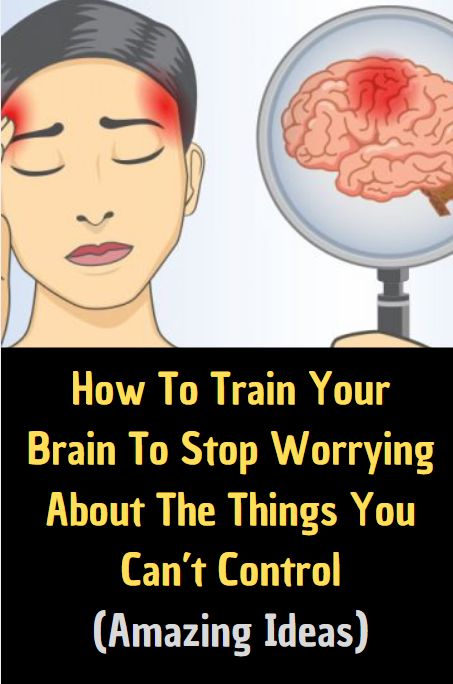
Breathe Deeply
Shallow breathing, which many of us do unconsciously, decreases your energy level and leaves you feeling tense, making PMS feel even worse, says Lark. To ease your discomfort, try practicing inhaling and exhaling slowly and deeply.
Sink Into A Tub
Indulge yourself in a mineral bath to relax muscles from head to toe, Lark suggests. Add 1 cup of sea salt and 1 cup of baking soda to warm bathwater. Soak for 20 minutes. (Here’s 5 more reasons to take a bath tonight.)
Be Chaste
Consider adding chasteberry to your arsenal of PMS relief options. Most experts recommend it as the top herbal remedy for PMS symptoms. Find it in a tea, tincture, or other preparation at a health food store. Drink a cup of chasteberry tea, or take 5 to 15 drops of tincture, mixed with a few ounces of water, three times a day.
Rely on Rosemary
According to herbal experts, certain compounds in rosemary may bring hormone levels into balance and reduce symptoms. To make rosemary tea, bring 1 cup of water to a boil and pour it over 1 teaspoon of dried rosemary leaves. Cover and steep for 10 to 15 minutes, then drink warm. During the week you expect your period, drink a cup before lunch and a cup before dinner for 3 days.
To make rosemary tea, bring 1 cup of water to a boil and pour it over 1 teaspoon of dried rosemary leaves. Cover and steep for 10 to 15 minutes, then drink warm. During the week you expect your period, drink a cup before lunch and a cup before dinner for 3 days.
Try Some Other Herbs
A few other herbal supplements, most notably black cohosh, wild yam, and evening primrose oil, may also be helpful in alleviating the pain, cramping, and mood swings common in PMS, says McAllister. As with all herbal treatments, you’ll want to discuss these options with your doctor before taking them.
MORE: 25 Healing Herbs You Can Use Every Day
Get An Advance From Your Sleep Bank
If insomnia is part of your PMS, prepare for it by going to bed a few hours earlier for a few days before you expect PMS to set in, says Lark. It may help alleviate the tiredness and irritability that go hand in hand with insomnia. (Use these 11 tips to set yourself up for a spectacular night’s sleep. )
)
Don’t Hide The Truth
Talking about your PMS problems with your spouse, friends, or coworkers does help, says Lark. You may even find a PMS self-help group where you can share your experiences with others who have PMS. To find one in your area, ask your doctor or call a local women’s medical center.
Avoid Empty Calories
Many women crave sweets while fighting PMS, but McAllister says these simple carbohydrates start a vicious cycle. “Sugar cravings lead to eating highly refined carbohydrates, which leads to a rapid spike in your blood glucose level. This leads to overstimulation of the pancreas and a release of insulin, which drives blood sugar levels to below normal, which results in feelings of hunger, fatigue, irritability, and cravings for more sugar. Ultimately, this ends in weight gain,” she says.
Fill Up On Fiber
Luckily, there’s an easy way to break this cycle, adds McAllister. Just substitute whole grains and complex carbohydrates with plenty of fiber, found in vegetables, beans, and whole grain bread, in place of nutritionally empty foods. “When women satisfy their carb cravings with complex carbohydrates that are high in fiber, like a bran muffin with a small handful of nuts, they can satisfy their cravings without triggering the destructive cycle.” (Here’s 6 tasty ways to get more fiber.)
“When women satisfy their carb cravings with complex carbohydrates that are high in fiber, like a bran muffin with a small handful of nuts, they can satisfy their cravings without triggering the destructive cycle.” (Here’s 6 tasty ways to get more fiber.)
Decrease Dairy
Dairy has many positive benefits in the American diet—but while you’re suffering through PMS, you may want to find those benefits from a different food. “The vast majority of American women have some degree of lactose intolerance, and for these women, eating dairy foods can cause a great deal of bloating and abdominal discomfort,” says McAllister. “In addition, dairy foods may worsen inflammation in the bodies of many women.”
Restrict Salt
McAllister says that salt is another foodstuff you’ll want to cut back on. “Salt increases the likelihood of water retention and bloating, and should be eaten in moderation by women with PMS.”
Get Good Proteins And Fats
While you’re cutting out the dairy and salt, add good proteins and fats, says McAllister. The essential fatty acids are particularly important, as most women don’t get enough, she says. “Good sources of these nutrients include fatty fish such as salmon, tuna, and mackerel, and avocados, nuts, and seeds.”
The essential fatty acids are particularly important, as most women don’t get enough, she says. “Good sources of these nutrients include fatty fish such as salmon, tuna, and mackerel, and avocados, nuts, and seeds.”
Cut The Caffeine Habit
You may want to cut back a bit on the morning coffee while experiencing PMS symptoms, says McAllister. “Caffeine can stimulate the adrenal glands and trigger production and release of stress hormones, making PMS symptoms worse.” (Have one of these 5 caffeine-free food combos that’ll give you more energy than a latte.)
Drink Up
While you’re cutting out caffeine, you might want to consider replacing it with water and green tea. “Water helps flush toxins from the body and may help control appetite. Drinking sufficient water may actually help reduce bloating,” says McAllister. “Green tea is rich in antioxidants and may help reduce the pain and inflammation associated with PMS.”
Supplements That Can Help With PMS Symptoms
A number of vitamins, minerals, and other supplements may help relieve PMS symptoms, some doctors say. Here’s the lowdown on nutritional solutions. Vitamin B6. Research into vitamin B6 and PMS has shown that increasing your intake of the nutrient can help alleviate symptoms such as mood swings, fluid retention, breast tenderness, bloating, sugar cravings, and fatigue, says Lark. But, she cautions, don’t experiment with the vitamin on your own. B6 is toxic in high doses. Your doctor should supervise any vitamin therapy, including those mentioned below:
Here’s the lowdown on nutritional solutions. Vitamin B6. Research into vitamin B6 and PMS has shown that increasing your intake of the nutrient can help alleviate symptoms such as mood swings, fluid retention, breast tenderness, bloating, sugar cravings, and fatigue, says Lark. But, she cautions, don’t experiment with the vitamin on your own. B6 is toxic in high doses. Your doctor should supervise any vitamin therapy, including those mentioned below:
Fish oil or flax oil: Inflammation is a major cause of pain and other PMS symptoms, and the omega-3 fatty acids found in fish oil and flax oil are potent anti-inflammatory agents that have been shown in studies to reduce this inflammation, says McAllister. Plus, most people just don’t get as many of these vital nutrients as they should.
Calcium and vitamin D3: Studies seem to suggest that these two can work in tandem to curb PMS symptoms. “In a 2005 study published in the Archives of Internal Medicine , researchers found that women who consumed 1,200 milligrams of calcium and 400 IU of vitamin D had a 40% reduction in risk of PMS,” says McAllister. “Vitamin D3 appears to be better absorbed and utilized by the body than Vitamin D2.” (Here’s how much vitamin D you really need.)
“Vitamin D3 appears to be better absorbed and utilized by the body than Vitamin D2.” (Here’s how much vitamin D you really need.)
Magnesium: Along with calcium comes magnesium, as things just seem to be better when these two minerals are in balance. “When levels of calcium and magnesium are balanced in the body, carbohydrate cravings tend to diminish,” says McAllister. This mineral may also promote restful sleep, reduce muscle cramping, regulate blood sugar levels, and minimize migraines.
The PMS pill: Your best bet for treating PMS with nutritional supplements is to take a balanced supplement every day, says Lark. Your nearby neighborhood drugstore may even sell products specially formulated for PMS symptoms.
Should You Visit Your Gynecologist?
The symptoms of premenstrual syndrome rarely call for medical intervention, but drastic circumstances demand drastic measures. If you’ve tried everything here and nothing seems to help, see your doctor about a prescription medication.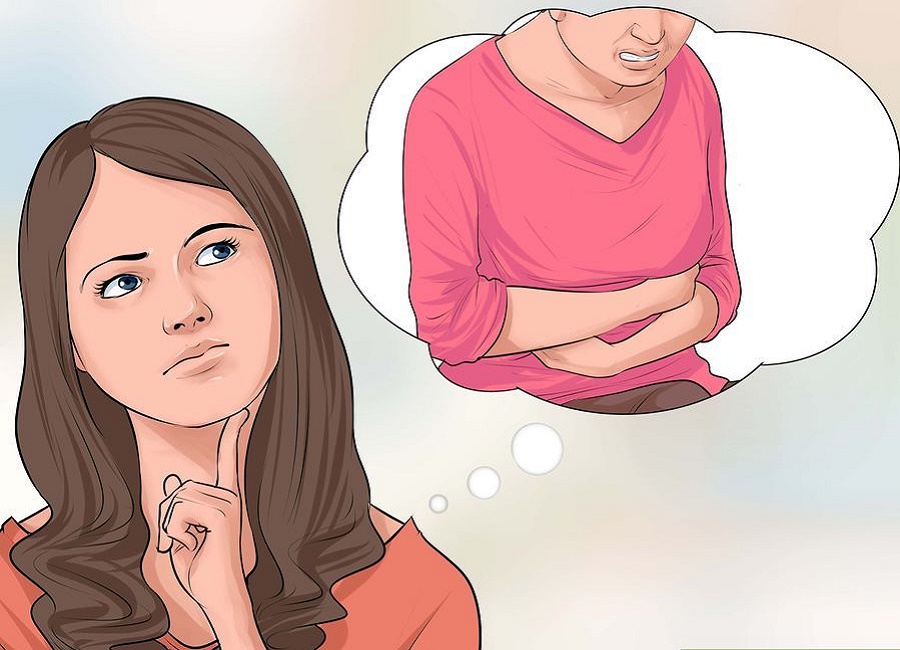 In addition, if the symptoms of PMS are seriously affecting your health and other daily activities, see your doctor as soon as possible. You may have premenstrual dysphoric disorder (PMDD), a more serious complication of PMS symptoms.
In addition, if the symptoms of PMS are seriously affecting your health and other daily activities, see your doctor as soon as possible. You may have premenstrual dysphoric disorder (PMDD), a more serious complication of PMS symptoms.
MORE: 7 Surprising Things Your First Period Says About You
Panel Of Advisors
Steven Jepson, MD, is the medical director of the Utah Dermatologic and Medical Procedures Clinic and author of 7 Ways to Look Younger Without Undergoing the Knife.
Susan G. Kornstein, MD, is a professor of psychiatry and obstetrics-gynecology and executive director of the Institute for Women’s Health at Virginia Commonwealth University in Richmond.
Susan Lark, MD, is a distinguished clinician, lecturer, and women’s health expert. She maintains drlark.com and is author of several books, including Hormone Revolution.
Rallie McAllister, MD, MPH, is a board-certified family physician in Kingsport, Tennessee, and author of several health-related books, including Healthy Lunchbox: The Working Mom’s Guide to Keeping You and Your Kids Trim and Riding for Life: A Horsewoman’s Guide to Lifetime Health and Fitness.
This content is created and maintained by a third party, and imported onto this page to help users provide their email addresses. You may be able to find more information about this and similar content at piano.io
Premenstrual Dysphoric Disorder Symptoms and Treatment
What is Premenstrual Dysphoric Disorder (PMDD)?
Premenstrual dysphoric disorder, or PMDD, is a cyclic, hormone-based mood disorder, commonly considered a severe and disabling form of premenstrual syndrome (PMS). While up to 85% of women experience PMS1, only around 5% of women are diagnosed with PMDD, according to a study in the American Journal of Psychiatry.2 PMDD can arise at any time during a woman’s reproductive years although the average age of onset is 26 years.
Like PMS, the symptoms of PMDD begin in the late luteal phase of the menstrual cycle (after ovulation) and end shortly after menstruation begins. 3 While most women have PMS from time to time in the days leading up to their period, the symptoms do not cause any clinically significant distress or impact their ability to continue with their daily activities. However, for women with PMDD, the more severe PMS-related problems—particularly those that are psychological—prevent them from going about their everyday lives. Such psychological symptoms include depression and suicidal thoughts, anxiety, irritability and tension. These symptoms do not necessarily occur every cycle, but they are present in the majority of the cycles. Some months may be worse than others.
3 While most women have PMS from time to time in the days leading up to their period, the symptoms do not cause any clinically significant distress or impact their ability to continue with their daily activities. However, for women with PMDD, the more severe PMS-related problems—particularly those that are psychological—prevent them from going about their everyday lives. Such psychological symptoms include depression and suicidal thoughts, anxiety, irritability and tension. These symptoms do not necessarily occur every cycle, but they are present in the majority of the cycles. Some months may be worse than others.
The onset of PMDD may begin at any time after a woman’s first period, although many individuals report a worsening of symptoms as they approach menopause.4 After menopause and during pregnancy, symptoms do not occur, though it is important to note that women with PMDD have a high risk of experiencing postpartum depression following the birth of a child.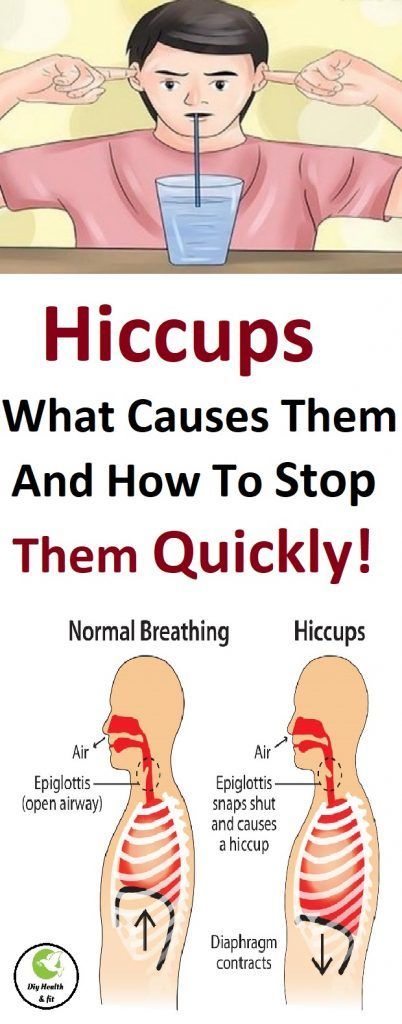 5
5
Causes of PMDD
Researchers are still working to determine the exact cause of PMDD, though it has been suggested that women with the disorder are more sensitive to normal levels of estrogen and progesterone fluctuation that cause premenstrual symptoms.6
Risk Factors
• Environmental: Stress, history of interpersonal trauma, and seasonal changes are all environmental factors associated with the presence of premenstrual dysphoric disorder.
• Genetic: While the heritability of premenstrual dysphoric disorder is unknown, it is estimated that premenstrual symptoms generally are 50% heritable.
• Menstrual Cycle Modifiers: According to the DSM-5, women who use oral contraceptives may have fewer premenstrual complaints than do women who do not use oral contraceptives.
PMDD Symptoms
To receive a diagnosis of PMDD, a woman must have experienced symptoms during most of the menstrual cycles of the past year and these symptoms must have had an adverse effect on work or social functioning.
While the core symptoms relate to mood and anxiety, behavioral and physical symptoms commonly occur also. It is crucial to note that the presence of behavioral or physical symptoms in the absence of mood and/or anxious symptoms is not sufficient for a diagnosis.
In the majority of cases, at least five of the following symptoms must be present in the week before the period, start to improve within a few days after the onset, and become minimal in the week following:7
• Mood swings
• Irritability or anger or increased interpersonal conflicts
• Depressed mood, feelings of hopelessness, or self-deprecating thoughts
• Anxiety, tension, and/or feelings of being on edge
• Decreased interest in usual activities
• Difficulty concentrating
• Marked lack of energy
• Changes in appetite
• Hypersomnia or insomnia
• A sense of being overwhelmed or out of control
• Physical symptoms such as breast tenderness or swelling, joint or muscle pain, a sensation of bloating, or weight gain
Diagnosis
A clinician must determine that the patient’s symptoms are not merely an exacerbation of another disorder, such as depression or panic disorder, and cannot be attributed to the effects of substance abuse.
The symptoms should also be confirmed by prospective daily ratings of at least two symptomatic cycles.
What is The Difference Between PMS and PMDD?
PMS is a less serious condition than PPMD as it does not generally interfere with daily functioning and the symptoms exhibited are less severe in their intensity. s. For a diagnosis of PMDD to be made, a minimum of five symptoms are required to be present.
What’s more, although women may experience some fluctuation in mood in the days before their period, the psychological symptoms of PMDD such as severe depression, anxiety, and suicidal thoughts are not associated with PMS.
Comorbidity
Although a woman would not receive a diagnosis of PMDD if she only experiences a worsening in symptoms of another mental disorder around the time of menses, PMDD can be considered in addition to the diagnosis of another mental disorder if the individual experiences PMDD symptoms that are markedly different to those experienced as part of the ongoing disorder.
Article continues below
Worried you may be suffering from a mental health disorder?
Take one of our 2-minute mental health quizzes to see if you could benefit from further diagnosis and treatment.
Take a Mental Health Quiz
PMDD Treatment
Medication
A group of antidepressants named selective serotonin reuptake inhibitors (SSRIs) can be prescribed to women suffering from PMDD. The FDA approved sertraline, fluoxetine, or paroxetine hydrochloride may be prescribed to help alleviate symptoms.
Moreover, over-the-counter pain relievers may help with breast tenderness, muscle aches and pains, cramps, and headaches. Your doctor may suggest you try ibuprofen, naproxen, or aspirin to help relieve these physical symptoms.
Birth Control
In 2010, the FDA approved the birth control pill containing drospirenone and ethinyl estradiol to treat PMDD.8 It may be worth talking to your doctor or gynecologist to determine whether or not this birth control pill (brand name Beyaz) is right for your body and could help with your PMDD symptoms.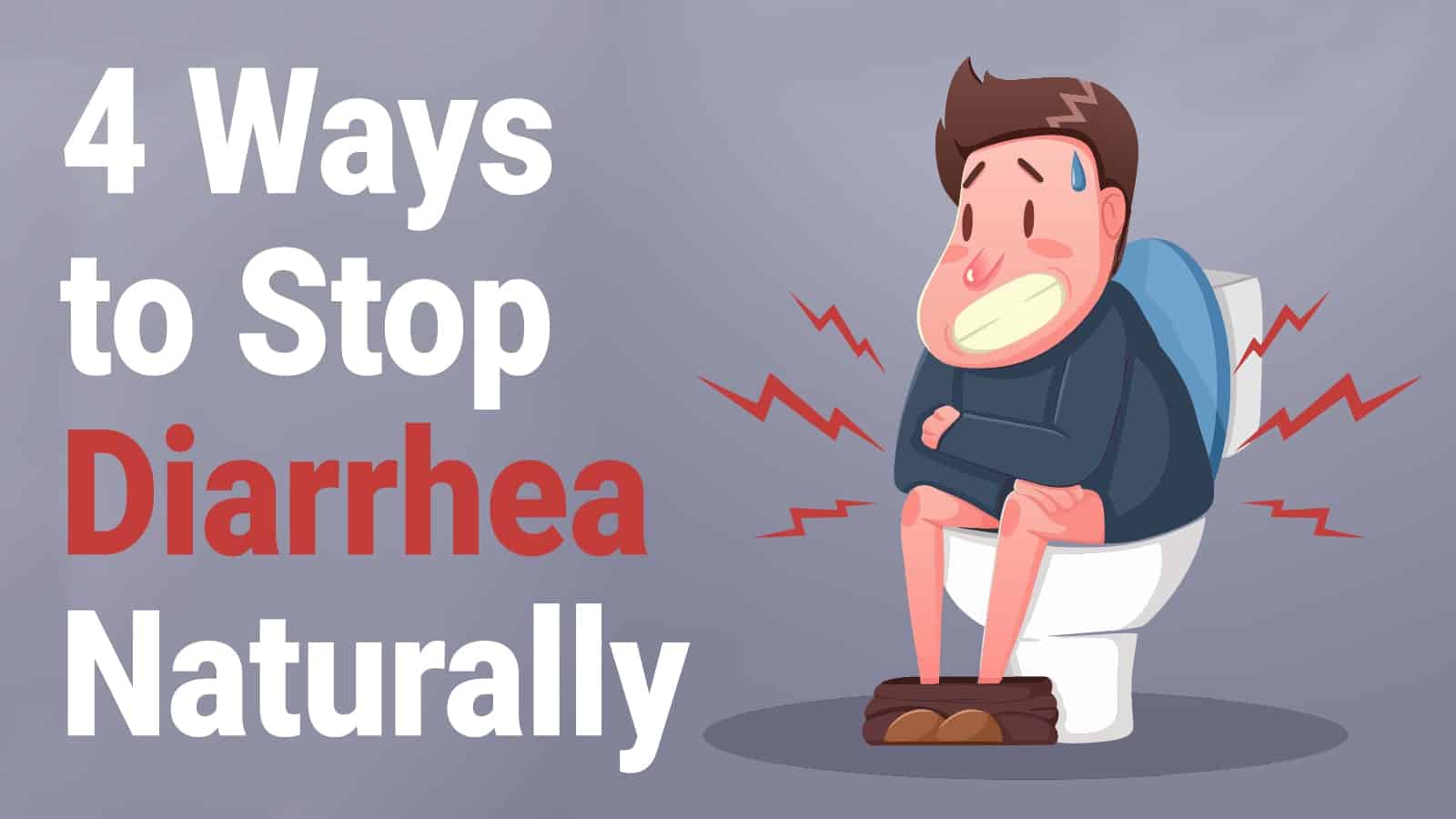
Psychotherapy
Living with severe depression and anxiety shouldn’t be something you have to face alone. Cognitive behavioral therapy (CBT) is a structured, action-oriented type of psychological treatment that focuses on the interaction between thoughts, feelings, and behaviors. CBT has been shown to be an effective treatment for mood and anxiety disorders and has also been shown to help people cope better with physical symptoms, such as pain.
Surgery
When drug-based treatments are ineffective, surgical removal of the ovaries, known as an oophorectomy, may be considered. While ovary removal has been shown to relieve the symptoms of PMDD, it also causes women to stop ovulating and become menopausal, which also comes with a variety of symptoms. Opting for surgery in the form of ovary removal is a complex and serious decision that would likely be the last resort for PMDD treatment.
Alternative Treatments
If medication or surgery isn’t a viable treatment path, you may want to try natural remedies for PMDD symptoms. Research shows that mindfulness meditation can reduce anxiety, depression, and pain–all common symptoms of PMDD. To relieve menstrual cramps, take a warm bath and try different menstrual products during menstruation–for some women, tampons can increase cramping, so pads may be a better option.
Research shows that mindfulness meditation can reduce anxiety, depression, and pain–all common symptoms of PMDD. To relieve menstrual cramps, take a warm bath and try different menstrual products during menstruation–for some women, tampons can increase cramping, so pads may be a better option.
Support and Resources
If you think you may be suffering from PMDD, we encourage you to seek diagnosis and treatment from your doctor and a mental health professional. Although PMDD can feel like a debilitating and lonely condition, it is important to remember that you aren’t alone. There are a variety of resources available to you for advice and support, both online and in the form of support groups. For more information, ask your healthcare provider about what is available in your area and check out the links below:
Peer Support with The Gia Allemand Foundation
PMDD Moms
PMDD, Hysterectomy and Life After
Last Updated: Mar 7, 2019
Oracle Hospitality OPERA – HRS Hospitality & Retail Systems
What are cookies?
Cookies are small text files that are stored on your computer or mobile device when you visit our website.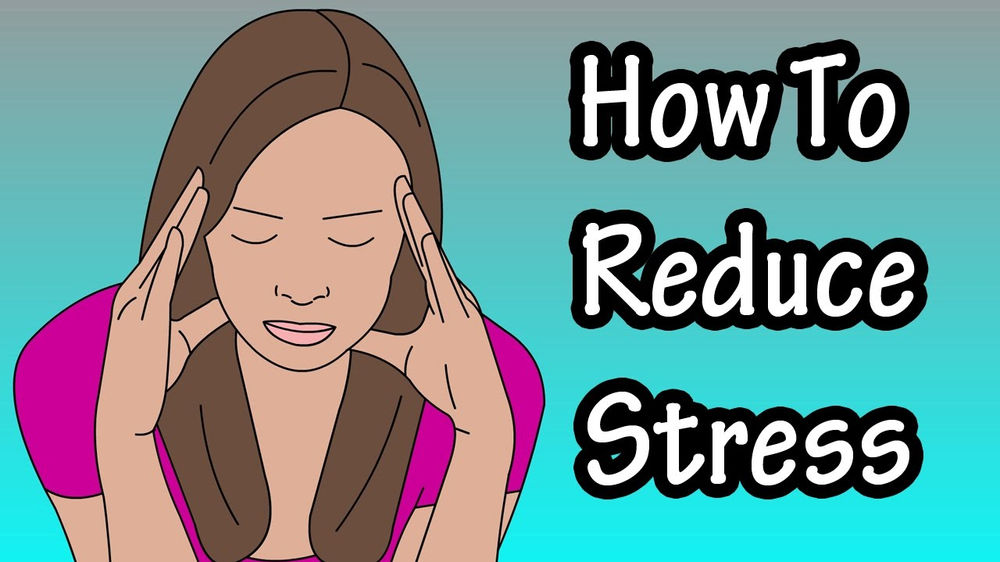 Since our cookies do not contain any personal information, your privacy is protected.
Since our cookies do not contain any personal information, your privacy is protected.
Why we use cookies
We use cookies to improve your user experience and ensure you get the best experience on our website.Our website uses third party cookies to provide you with advertising materials that may interest you. Most browsers automatically accept cookies. You can prevent this by disabling / enabling the use of cookies as described below.
Are all cookies the same?
Cookies can be classified as follows.
Session cookies. These cookies are automatically deleted after you close your browser.
Persistent cookies. These cookies remain on your device until their expiration date (minutes, days or years from the moment they were created or updated).
Third party cookies. These cookies are stored on behalf of third parties.
Cookies can be managed and deleted by changing your browser settings accordingly. However, this may prevent you from using certain features of our website.
However, this may prevent you from using certain features of our website.
For more information, please visit www.aboutcookies.org or www.allaboutcookies.org.
How to manage cookies on our website
In order to provide you with the best management options, we have divided the cookies on this site into four categories based on their purpose: need for use, usability, performance and advertising.
You can directly enable or disable each of these categories of cookies (with the exception of essential cookies, which are strictly required). Once disabled, third-party cookies will no longer be used by this site (we cannot delete them).
Necessary cookies
: These cookies are essential for the website to function properly.For example: authentication cookies.
User convenience cookies
: These cookies allow us to improve the usability of the website and offer you additional functionality.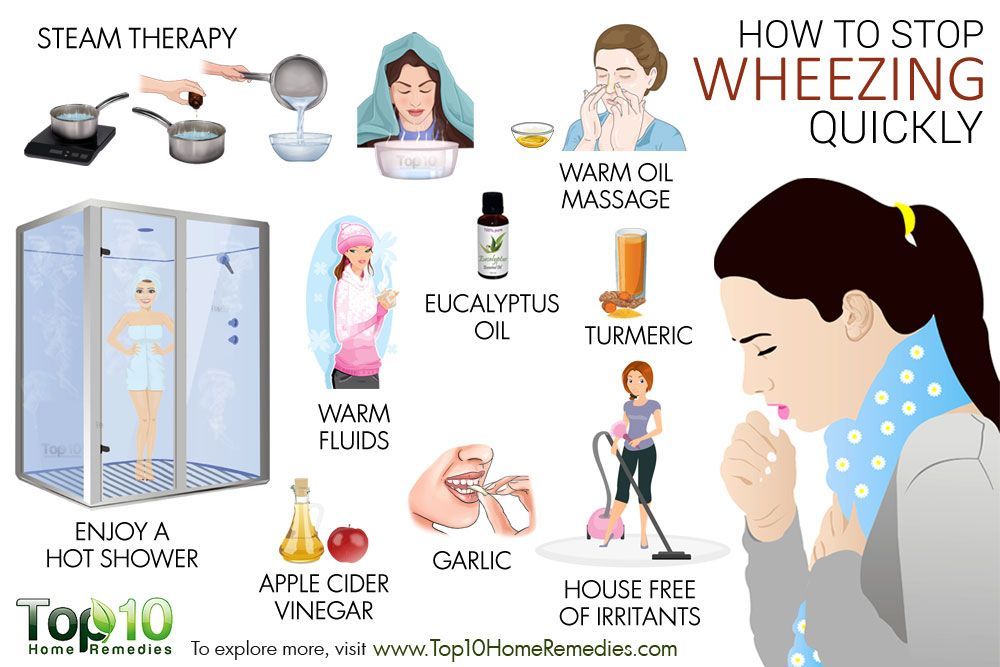 For example: User-friendliness cookies are used to store search results, language settings, font sizes, etc.
For example: User-friendliness cookies are used to store search results, language settings, font sizes, etc.
Performance cookies
: These cookies collect information about website usage. Among other things, they help us identify the most popular sections of our site. In this way, we can adapt the content of our sites to your needs and improve our offerings.
Advertising cookies
: These cookies are used to send advertising information that may interest you, for example based on previously visited web pages.
The British submarine will be equipped with an American control system: Science and technology: Lenta.ru
The American company Northrop Grumman will supply a PMS (Platform Management System) control system for the fourth nuclear submarine of the Astute project of the British Navy, Defense-aerospace reports.
The PMS system is designed to control the engine room and onboard systems of submarines. It has an open architecture and can be integrated with third-party products.The high degree of equipment reliability ensures the safe operation of the nuclear submarine.
It has an open architecture and can be integrated with third-party products.The high degree of equipment reliability ensures the safe operation of the nuclear submarine.
The PMS system is based on the developments of another American company – Sperry Marine, which specializes in the creation of navigation and control systems for marine equipment. The use of ready-made technical solutions developed in the civilian sector will significantly reduce the cost of creating and operating a PMS system for a British submarine.
Construction of the fourth Astute nuclear submarine, designated Audacious, is being carried out by BAE Systems at the Barrow-in-Furness shipyard under an initial contract of approximately $ 400 million, which was signed in May 2007.Signing of the main contract is expected in the near future.
The lead nuclear submarine of the Astute project was laid down in 2001 and launched in June 2007. It is planned that it will be transferred to the British Navy in 2008 and will enter the fleet in 2009. Currently, two more submarines of a similar design are under construction at the BAE Systems shipyard – Ambush and Artful, which will enter service in 2010 and 2012. The cost of the first three submarines will exceed $ 7 billion.
Currently, two more submarines of a similar design are under construction at the BAE Systems shipyard – Ambush and Artful, which will enter service in 2010 and 2012. The cost of the first three submarines will exceed $ 7 billion.
Astute nuclear submarines will become the most powerful submarines in the UK submarine fleet.The submarine’s submerged displacement is 7900 tons. Full speed is 29 knots (54 kilometers per hour). Armament includes heavy torpedoes and cruise missiles. Submarine nuclear reactors will operate without refueling for the entire 25-year service life.
How to import bookings from another ACS using Excel file
Import bookings, get started quickly in TL: WebPMS and have statistics on past bookings.
By default, imported bookings will appear in the “No number” line.If you want reservations to be assigned a physical number right away, set up automatic booking placement.
How to import reservations
1. Go to Hotel Management> Settings under the Data Import tab.
Go to Hotel Management> Settings under the Data Import tab.
2. Click on the “Import from file” button. If you are importing data from Bnovo PMS, click Import from ACS.
|
3. If you are importing data from Bnovo PMS, download the archive from Bnovo PMS, upload it and click “Continue”.
If you are importing data from Excel, click Download Template. An Excel import template is saved to your computer. Fill in the reservations you want to import. Columns marked with * are required.Do not change the column names, their order and composition.
4. Return to your TravelLine account. Click “Upload documents” and select the file with reservations. Click Continue.
5. Compare the room categories from the file with the room categories from TravelLine. It is important that reservations are uploaded to the appropriate room categories. Click Continue.
It is important that reservations are uploaded to the appropriate room categories. Click Continue.
6. Compare the rates from the file with the rates from TravelLine. Click Continue.
7.The import of reservations will take place. You can go to other sections of your personal account and continue working.
When the import is complete, click Finish.
Reservations imported. Download the import report to ensure that all reservations have been processed.
Import Report
After each import of armor, a report is generated in the “Import from file” tab.
The following indicators are presented in the report:
1.Start date – the date when you downloaded the file and started importing;
2. Start date of import – the earliest date of arrival in the reservation, which is in the report;
3. Import method – how the report was loaded;
4. Statuses:
- Uploaded n% – Displays the progress of the import.
 This indicator is a guideline for how much data has been imported and how much is left;
This indicator is a guideline for how much data has been imported and how much is left; - Completed – import from file completed successfully;
- Aborted – the started import was stopped by the user;
- Canceled – all reservations created in the WebPMS checkerboard as a result of the import have been canceled.
5. Unloaded by armor – the amount of armor that was transferred to the WebPMS checkerboard;
6. Errors in reservations – the number of reservations that have not been imported.
To view the import report:
1. Click on the “Action” button and select “Download import report”.
The excel file with the report will be loaded. There are three tabs in the report:
- “Successful Import” – Reservations successfully saved to WebPMS.
- “Import with errors” – Reservations not saved in WebPMS, with an explanation of the error.
- Invalid Data – Descriptions of errors are provided here.
 It can be the following errors: mandatory field is not filled in guest’s name / booking number / price / date and time of departure , etc.
It can be the following errors: mandatory field is not filled in guest’s name / booking number / price / date and time of departure , etc.
|
What if the import is wrong?
It happens that the file is filled incorrectly by mistake and you need to cancel the import.
If the import is not yet complete, you can stop it.
1. Go back to Hotel Management> Settings under the Import tab.
2. In the “Previously completed imports” block, click on the “Stop import” button.
3. In the warning window “Stop import” click on “Apply”.
The import status will change to Aborted.
How to cancel all imported reservations
Next, cancel the already saved reservations. In the same way, you can cancel reservations for a completed import.
In the same way, you can cancel reservations for a completed import.
1. Click on the Action button and select Cancel Import Reservations.
2. Reservations will be automatically canceled. Cancellation notifications will not be sent to guests.
How to cancel some imported reservations
You can cancel not all reservations, but several specific ones:
1. In the section “Hotel Management”> “Checkerboard” find the desired reservation and click on it.
2. Click on the “Cancel” button.
3. In the “Cancellation” window, click on “Confirm”. By default, cancellation notifications for such bookings are not sent to the guest’s email address. If you want to send a notice, check Send guest cancellation notice.
R & S®VTC-VTE-VTS Video Signal Testers | Overview
90,091 up to 600 million characters per second
90,091 to 300 million characters per second
90,091 to 300 million characters per second
| Dimensions | without handles | 445 mm x 176 mm x 307 mm (17.  5 “x 6.9” x 12.1 “) 5 “x 6.9” x 12.1 “) |
| Weight | 12.0 kg | |
| Base unit R&S ® VTE | ||
| Dimensions | without handles | 232 mm × 132 mm × 307 mm (3 HU) (9.1 “× 5.2” × 12 “) |
| Weight | 6 kg | |
| Base unit R&S ® VTS | ||
| Dimensions | without handles | 229 mm x 44 mm x 406 mm (9.  02 “x 21.42” x 15.98 “) 02 “x 21.42” x 15.98 “) |
| Weight | 4 kg | |
| MHL extension | ||
| R&S ® VT-B2350, send / receive MHL | ||
| Interface | MHL in.(HDMI type A), MHL out. (micro USB), HDMI out. (type A, auxiliary) | |
| Standard MHL | MHL 1.4 / 2.2 | |
| MHL Analysis | ||
| Master Data | Video Formats and Timing (24-bit), Audio Formats and Sample Rates, HDCP Settings, CBUS Lock State | |
| CEA-861E InfoFrame | Interpretation of AVI, Audio, SPD and MPEG InfoFrame | |
| Decoding | screen video, internal audio playback | |
| Generation MHL | ||
| Templates | Static Test Patterns (All MHL Video Resolutions; 24-bit / PackedPixel Mode) | |
| Audio | Test Tones (All PCM Audio Formats and Sample Rates) | |
| EDID Reader | EDID data display | |
| R&S ® VT-B2351 Receiving MHL PackedPixel | ||
| Interface | MHL in.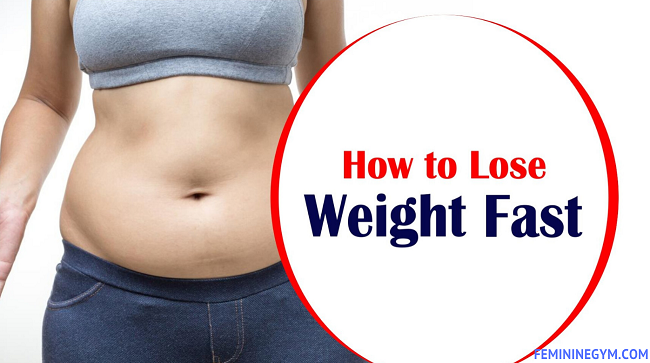 (HDMI type A), (HDMI type A), HDMI out. (type A, auxiliary) | |
| Standard MHL | MHL 1.4 / 2.2 | |
| MHL Analysis | ||
| Master Data | Video Formats and Timing (PackedPixel Mode), Audio Formats and Sample Rates, HDCP Settings, CBUS Lock Status | |
| CEA-861F InfoFrame | Interpretation of AVI, Audio, SPD and MPEG InfoFrame | |
| Decoding | screen video, internal audio playback | |
| R&S ® VT-K355, customer test MHL CTS | ||
| Customer Test MHL CTS | according to CTS 1.4 / 2.2 Section 4.2 | 4.2.1–4.2.3, 4.2.5–4.2.9 |
| Code Key Tests MHL CTS | according to CTS 1.4 / 2.2 section 5.2 | 5.2.1–5.2.3, 5.2.5–5.2.9 |
| R&S ® VT-K2355, MHL source test CTS | ||
| according to CTS 1.4 / 2.2 Section 3.2 | 3.2.2–3.2.4, 3.2.6–3.2.10 | |
| R&S ® VT-K2356 CBUS Tracker | Send and receive commands MSC, RCP, RAP, UCP | |
| HDMI Extensions | ||
| R&S ® VT-B2362 HDMI CTS 600 MHz RX / TX | ||
| Interface | HDMI in.(HDMI type A), HDMI out. (HDMI Type A) | |
| HDMI Standard | HDMI 2.0 (6G mode) | |
| TMDS Character Entry Rate | ||
| HDMI Analysis (CTS source tests only, seeR&S ® VT-K2365 HDMI CTS Source Test) | ||
| Hot Plug Detect (HPD) | can be enabled / disabled | |
| Input Signal Measurements | Pixel rate status Time to display one symbol TMDS | |
| HDMI Analysis (CTS Customer Tests only, seeR&S ® VT-K365, HDMI CTS Consumer Test) | ||
| HotPlug Detect Technology (HPD) | Status | |
| R&S ® VT-B2360 HDMI Receive 225 MHz, R&S ® VT-B2361 HDMI Receive 300 MHz | ||
| Interface | HDMI in.(HDMI type A), HDMI out. (auxiliary), S / PDIF in. (optical) | |
| HDMI Standard | HDMI 2.0 (3G mode) | |
| TMDS Symbol Rate | ||
| HDMI Analysis | ||
| Master Data | Video formats and timing up to 4K, audio formats and sample rates, HDCP settings | |
| CEA-861F InfoFrame | AVI, Audio & HDMI, InfoFrame depending on vendor | |
| Decoding | screen video, internal audio playback | |
| R&S ® VT-K2365 Testing HDMI CTS Sources | according to HDMI CTS 1.4 according to HDMI CTS 2.0 | 7-1, 7-16-7-19, 7-23-7-40 HF1-31, HF1-33, HF1-35, HF1-51 available with R&S ® VT-B2362: HF1- 13, HF1-10, HF1-11, HF1-12, HF1-21, HF1-22, HF1-32, HF1-14, HF1-15, HF1-16, HF1-24, HF1-25, HF1- 26, HF1-34, HF1-35, HF1-41, HF1-36, HF1-37, HF1-38, HF1-39, HF1-40, HF1-47, HF1-48, HF1-49, HF1- 18, HF1-28, HF1-52 |
| R&S ® VT-K2366 Tracker CEC | Send and receive CEC commands | |
| R&S ® VT-B360 HDMI transmission 300 MHz | ||
| Interface | 4x HDMI out., | |
| HDMI Standard | HDMI 2.0 (3G mode) | |
| TMDS Symbol Rate | ||
| HDMI Generator | ||
| Master Data | Video Formats (HDMI, DVI), Audio Generator, HDCP Option, Hot Plug State | |
| Templates | static test templates (up to 4K) | |
| Audio Signal Generator | Test Tones (All PCM Audio Formats and Sample Rates) | |
| CEA-861F InfoFrame | AVI, Audio & HDMI, InfoFrame depending on vendor | |
| Analysis of audio return channels on port 1 | R&S ® VT-K2150 Audio Analysis | |
| R&S ® VT-K365, HDMI CTS Consumer Test | according to HDMI CTS 1.4 according to HDMI CTS 2.0 | 8-15-8-25, 8-29-8-30 HF2-9, HF2-23, HF2-26, HF2-25, HF2-31, HF2-32, HF2-35, HF2-39, HF2-41, HF2-53 available with R&S ® VT-B2362: HF2-5, HF2-24, HF2-6, HF2-7, HF2-8, HF2-36, HF2-37, HF2- 38, HF2-25, HF2-10 |
| Time Domain Analyzer Extensions | ||
| R&S ® VT-B2380, TMDS Time Domain Analyzer Module | ||
| Interface | CLK in.(SMA), CH + / CH– input. (SMA), CONTROL I / O | |
| Analog bandwidth | DC to 13 GHz (typ. -3 dB) | |
| Transmitter Resolution | 8 bit | |
| Eye Diagram Limits | cursor mask horizontal bar graph vertical bar graph | data 0+ and 0– data 0+ and GND, data 0– and GND data 1+ and 1– data 1+ and GND, data 1– and GND data 2+ and 2– data 2+ and GND data 2– and GND |
| R&S ® VT-K2385 HDMI CTS Source Test (select.) | like HDMI CTS 1.4 like HDMI CTS 2.0 Limitations due to different measuring principle | 7-1, 7-2, 7-3, 7-4, 7-6, 7-7, 7-8, 7-10, 7-11, 7-12, 7-13 and 7-15 HF1-1, HF1-2, HF1-3, HF1-4, HF1-5 and HF1-6 |
| R&S ® VT-Z2385 HDMI Type A TPA Test Adapter (Male) | ||
| Interface | HDMI in.(HDMI type A plug), CLK out. (SMA), CH + / CH– out. (SMA), CONTROL I / O | |
| High Definition Multimedia Standard | HDMI 1.4 / HDMI 2.0 | |
| Extension Analog A / V | ||
| R&S ® VT-B2370, analogue audio / video reception | ||
| Interfaces | Composite (1 × BNC) Component (6 × BNC) Audio L / R (2 × BNC) H / F video | |
| Analysis | Additional options required to analyze media content | |
| R&S ® VT-K2371, component support | activation of component inputs | |
| Additional options for media content analysis | ||
| R&S ® VT-K2100 HDMI Type A TPA Test Adapter (Male) | ||
| Videoscope | Signal Representations: Single, Ordered and Overlapped; marker and delta marker for time measurements and level | |
| Vectorscope | color measurements, RGB pixel values | |
| R&S ® VT-K2101, video measurements | Automatic measurement of noise signal parameters, frequency response, linear and harmonic distortion of composite and component signals | |
| R&S ® VT-K2111, A / V distortion analysis | comparative image analysis, PSNR, SSIM, defective image point , image freezing, black frame, skipped frames , dead pixels | |
| R&S ® VT-K2150, audio analysis | level, THD + N, frequency response, signal-to-noise ratio (SNR), crosstalk, inter-channel phase | |
| R&S ® VT-K2151, compressed audio support | channel status bit preview, embedded decoding compressed audio conforming to AC3, EAC3, Dolby ™ TrueHD, MPEG-1/2 and MPEG-2/4 AAC | |
| R&S ® VT-K2158, PESQ measurement | according to ITU-T P.862 | |
| R&S ® VT-K2159, POLQA measurement | according to ITU-T P.863 | |
| Modulator extensions | ||
| R&S ® VT-B600, broadband modulator | ||
| RF Performance | ||
| Frequency Range | base unit, with R&S option ® VT-K3083 | 30-900 MHz 30-3000 MHz |
| Frequency setting resolution | 1 Hz | |
| Level setting range | base unit, with R&S option ® VT-K3084 | –31.5 dBm to 0 dBm RMS for DVB-T –110 dBm to 0 dBm RMS for DVB-T |
| MER Ratio | for OFDM modulation | > 40 dB |
| Modulation systems | ||
| Terrestrial TV and Mobile TV | DVB-T2, DVB-T, DVB-H, DTMB, CMMB, T-DMB, ISDB-T, ISDB-T B , ISDB-T 1 seg., ATSC / 8VSB, ATSC-M / H, MediaFLO ™ | |
| Cable TV | DVB-C2, DVB-C, ISDB-C, J.83 / B | |
| Satellite TV | DVB-S2, DVB-S, DIRECTV | |
| Analog TV | B / G, D / K, I, M / N, L | |
| Broadcast | DAB, DAB +, ISDB-T SB , FM mono, FM stereo with RDS | |
| Additional functionality | ||
| Transport stream playback | file format | TRP, T10, ETI, FLO, MFS, PMS, BIN |
| A / V generator | file format | Patented by Rohde & Schwarz |
| Additive White Gaussian Noise (AWGN) | Signal to Noise Ratio (SNR) | -30 dB to +60 dB |
Use of tampons o.b.® during menstruation – what are tampons for and why it is convenient to use them during menstruation
Girls and women who lead an active lifestyle often prefer to use tampons, finding them convenient for a number of reasons. You can start using tampons, like pads, from the very first menstruation, choosing the right hygiene products for you. They reliably protect, without causing absolutely any discomfort, and, finally, they allow you not to change your usual way of life even in “these” days: with vaginal tampons you can run, swim in the pool, do other sports and wear tight clothes.
Why and why do women need tampons? Tampons o.b. ® gives you complete freedom of movement, comfort and optimal protection every day and night. You feel comfortable and confident in any situation! Find out what the secret is!
- With swabs o.b. ® :
- The liquid is absorbed inside the body to prevent unpleasant odors.
- You cannot feel the tampon at all during application if it is inserted correctly.It is invisible and gives you complete freedom of movement. Try the special o.b. ® ProComfort ™ with SilkTouch ™ coating for maximum insertion and withdrawal comfort.
- You are reliably protected every “such” day and every “such” night thanks to modern technologies o.b. ® such as the spiral grooves and SilkTouch ™ protective wings.
Choice for every day of the cycle
The use of tampons – this modern and reliable hygiene product – is possible with both scanty and heavy secretions.There is no age limit for the use of tampons. Even young girls can start using o.b. tampons. ® without fear of damaging the hymen. Line of tampons o.b. ® gives a woman the opportunity to choose a hygiene product individually: tampons are produced for use in different periods of menstruation. Usually, the intensity of bleeding in the first days of menstruation is stronger than in the following. To feel as comfortable as possible during your period, it is better to select tampons with a certain degree of absorbency for each day of the cycle.The number of “drops” indicated on each package of vaginal tampons will help you o.b. ® : Mini, Normal, Super and SuperPlus. The more “drops”, the higher the level of absorbency. So, for example, on the first and second days of your period you can start using o.b. ® ProComfort ™ Super or o.b. ® ProComfort ™ SuperPlus during the day and at night use o.b. ® ProComfort ™ NIGHT Super with SilkTouch ™ protective wings that eliminate leakage and perfectly adapt to your individual body.When the discharge becomes less abundant (3-4 days and the following days of menstruation), you can switch during your period to tampons with a lower absorbency. To choose the type of product that is optimal for you, use our selector.
Using tampons
It is completely natural to feel a little anxious when using a tampon for the first time. You need to take a deep breath and relax, because muscle tension can become an obstacle to the correct insertion of the vaginal tampon.The first step is to remove it from the package and prepare it for administration. Wash your hands before removing the wrapper from the tampon. After unrolling and removing it, you need to straighten the return cord. The second step is insertion into the vagina: first straight, and then at a slight angle to the back. You need to press a little on the tampon, inserting it to a depth equal to the length of the index finger. The tampon was inserted correctly if you cannot feel it inside you.
A tampon during menstruation is a reliable and very convenient means of protection.When using vaginal tampons, a woman does not need to limit herself to her usual activities and wearing her favorite clothes. The size of the tampon makes it easy to hide it even in a small clutch bag. On the packaging of tampons o.b. ® all application information is available. Detailed instructions with pictures will allow you not to experience difficulties with the introduction and correct removal of the hygiene product.
Tampons o.b. ® are available in a variety of designs, package sizes and absorbencies – you are sure to find the ones that are perfect for you.
iiko – automation of restaurants, bars, canteens
marketplace
| Online checkout with cash and card payments | only 1 ticket office | |||
| Customer screen for checkout in fast food | ||||
| Table Service, Reservations & Banquets | ||||
| Print service receipts for the kitchen | ||||
| Dish constructor, combo sets, tips for staff | ||||
| Kitchen screen and order queue management | ||||
| Accounting and control of the release of ready meals | ||||
| Electronic queue | ||||
| Control of the freshness of dishes in the distribution | ||||
| Basic cloud accounting – warehouse, sales, online write-offs | ||||
| Basic analytics in the cloud, online P&L and other reports | ||||
| Management of basic operations from a smartphone (via any browser) | ||||
| Automatic sales forecasting and resource planning | ||||
| Automatic generation of orders to suppliers | ||||
| Notifications of events requiring attention | ||||
| Advanced Accounting & Analytics, Report Builder | ||||
| Advanced financial, commodity, personnel management tools | ||||
| Advanced Chef & Accountant Calculator Tool | ||||
| Acceptance of orders for self-pickup | ||||
| Receiving orders for delivery at the checkout | ||||
| Integration with aggregators | ||||
| Integration with PBX, taking orders from your website, from a mobile application, etc.p. | ||||
| Control of production and packaging stages | ||||
| Centralized receipt and distribution of orders (call center) | ||||
| Control of delivery stages and online map of couriers’ movement | ||||
| Ready-made delivery site on the myresto platform.online | 1490 rub. / Month | 1490 rub. / Month | ||
| Mobile application for couriers | included 5 licenses | from 490 rubles / month | from 490 rubles / month | |
| Bonuses, cumulative discounts, promotions “as a gift” | ||||
| Guest base, phone and photo recognition, communication via SMS | ||||
| Loyalty program builder, personalization, gamification | ||||
| Deposits and Club Service System | ||||
| Corporate Nutrition Programs | ||||
| iikoWallet – electronic guest card, mobile bill payment | ||||
| RFM Analysis | ||||
| Consolidated reporting and basic network controls in the cloud | ||||
| Centralized accounting and advanced network management tools | ||||
| Factory-kitchen and provision of restaurants of the chain | ||||
| Global Loyalty Programs | ||||
| Franchise Management | ||||
| Connection to ready-made partner applications from the iiko | from 500 rub./ month | from 500 rubles / month | from 500 rubles / month | |
| Ability to develop custom applications (access to API iiko) | ||||
| System access rights setup | ||||
| Duration of the open period | 60 days | 60 days | 60 days | |
| Data retention period | 3 years | 3 years | 3 years |
Consist Business Group has implemented the Consyst solution.Hotel in Tsar Palace Luxury Hotel & SPA
Consist Business Group (part of the LANIT group) for the opening of Tsar Palace Luxury Hotel & SPA provided a ready-made solution for organizing accounting, tax and management accounting, as well as payroll and hotel personnel management … The company’s specialists implemented the Consyst.Hotel solution on the 1C platform as soon as possible – in one month.
The project was completed on time thanks to the ready-made Consyst solution.Hotel, which is designed specifically for the hospitality industry and is already used by many hotels, both operated by various operators and independent hotels.
At Tsar Palace Luxury Hotel & SPA, the solution helped to combine the main business processes of the hotel from financial to personnel accounting in a single IT loop. Consyst.Hotel was implemented on the basis of 1C software products (1C: Accounting CORP, 1C: Salary and personnel management), as well as integration with the Fidelio PMS system and IIKO POS system.
Olga Mirotina, General Manager of TsarPalace Luxury Hotel & SPA : “Today we have a working system for keeping records, in which regulated reports have already been successfully generated and submitted. The implementation of solutions for the integration of Consyst.Hotel with the hotel management system and the restaurant automation system and inventory control reduces our labor costs and guarantees the accuracy of accounting. ”
Dmitry Savochkin, Director of Key Accounts, Consist Business Group : “Consist Business Group” is grateful to Tsar Palace Luxury Hotel & SPA for the opportunity to once again confirm our competence in solving problems of automation of the hotel business.The Consyst.Hotel solution made it possible to implement the project in the shortest possible time, and the customer to get the result quickly, which is extremely important for business development. ”
Original press release
.




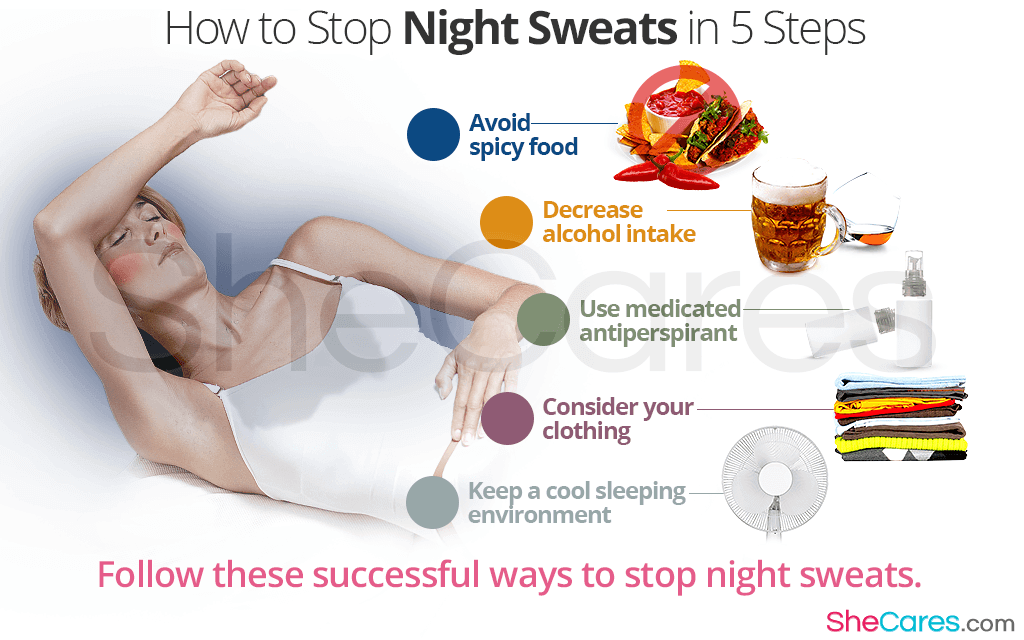 This indicator is a guideline for how much data has been imported and how much is left;
This indicator is a guideline for how much data has been imported and how much is left; It can be the following errors: mandatory field is not filled in guest’s name / booking number / price / date and time of departure , etc.
It can be the following errors: mandatory field is not filled in guest’s name / booking number / price / date and time of departure , etc.